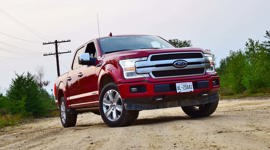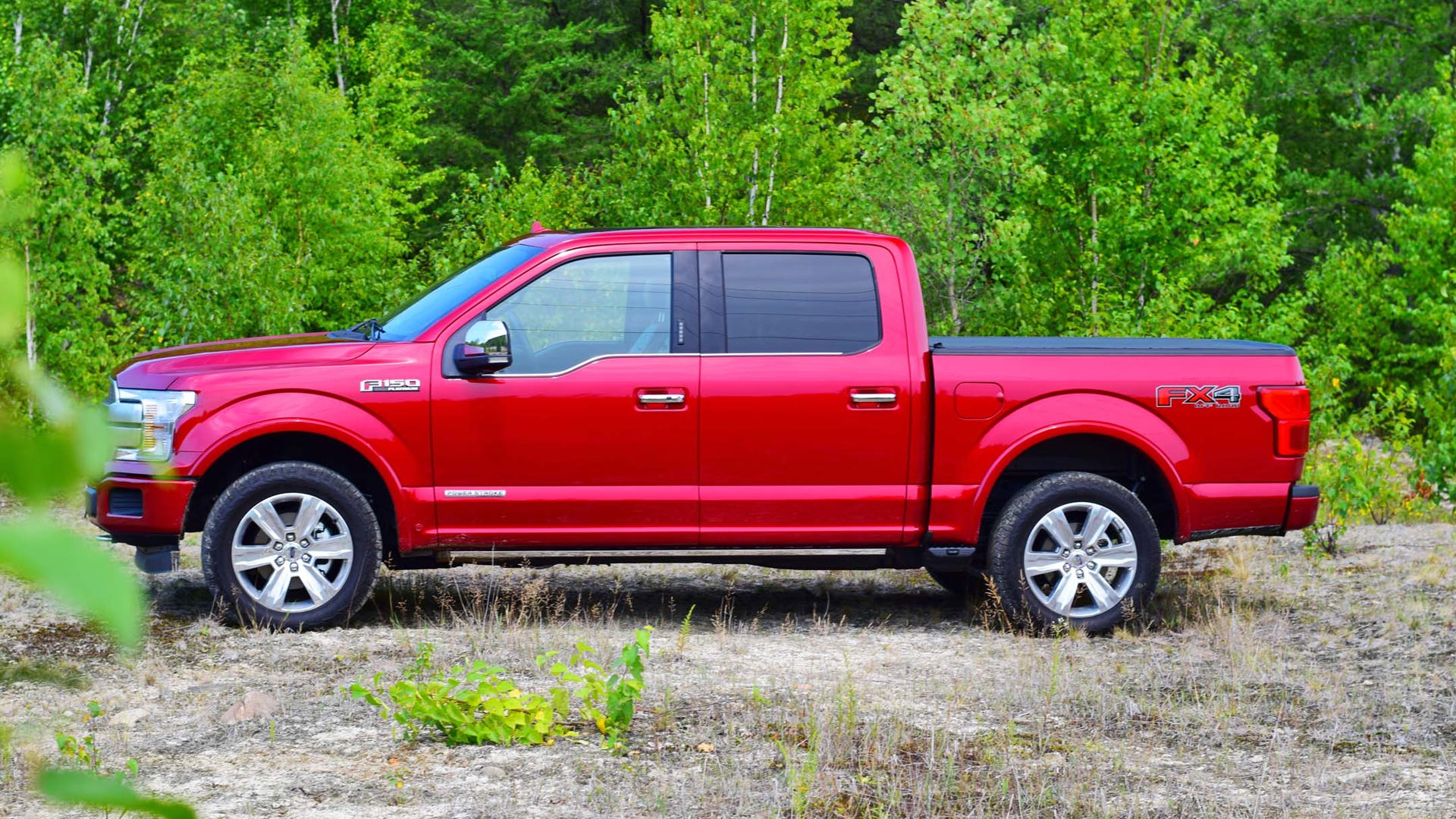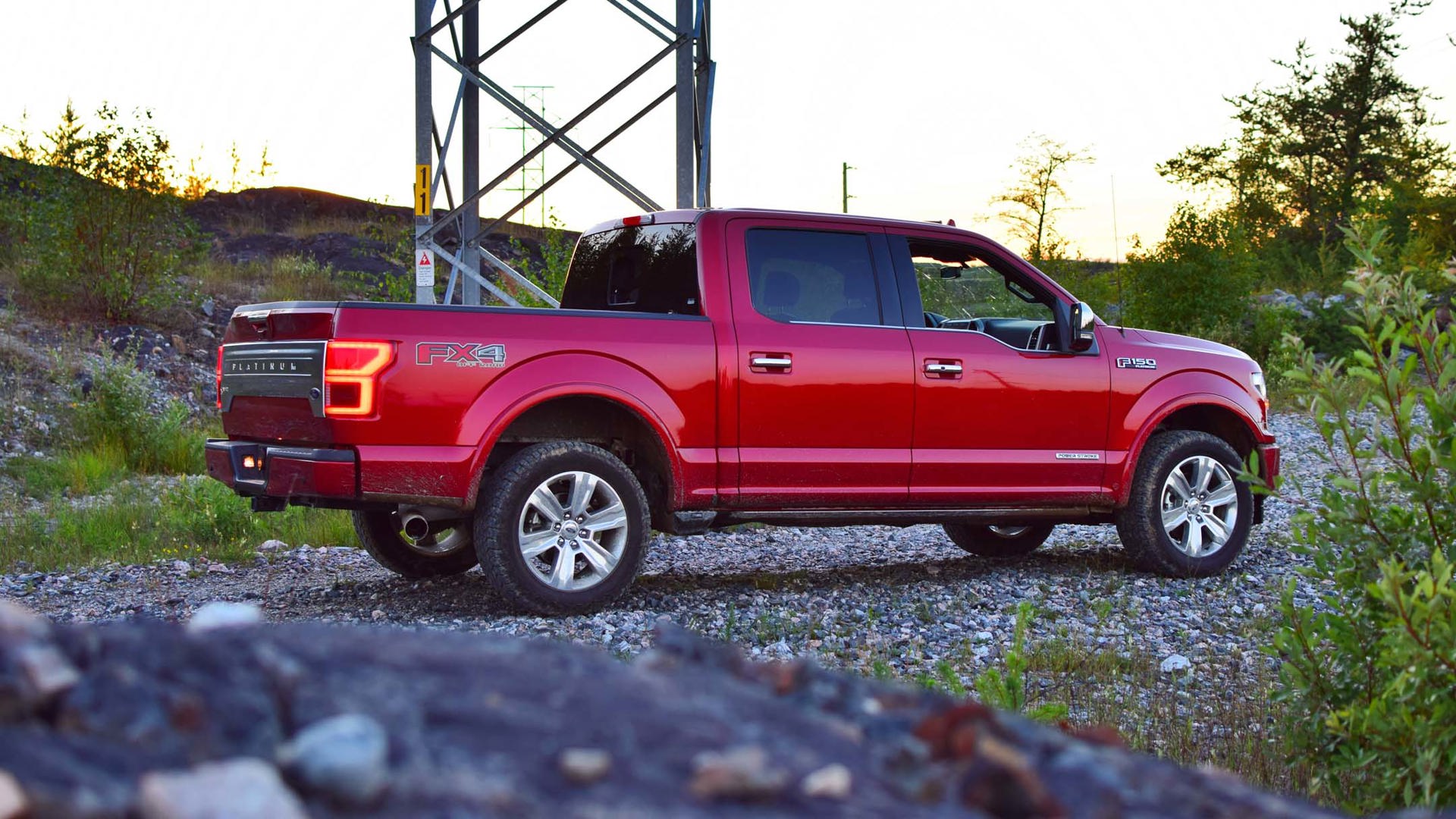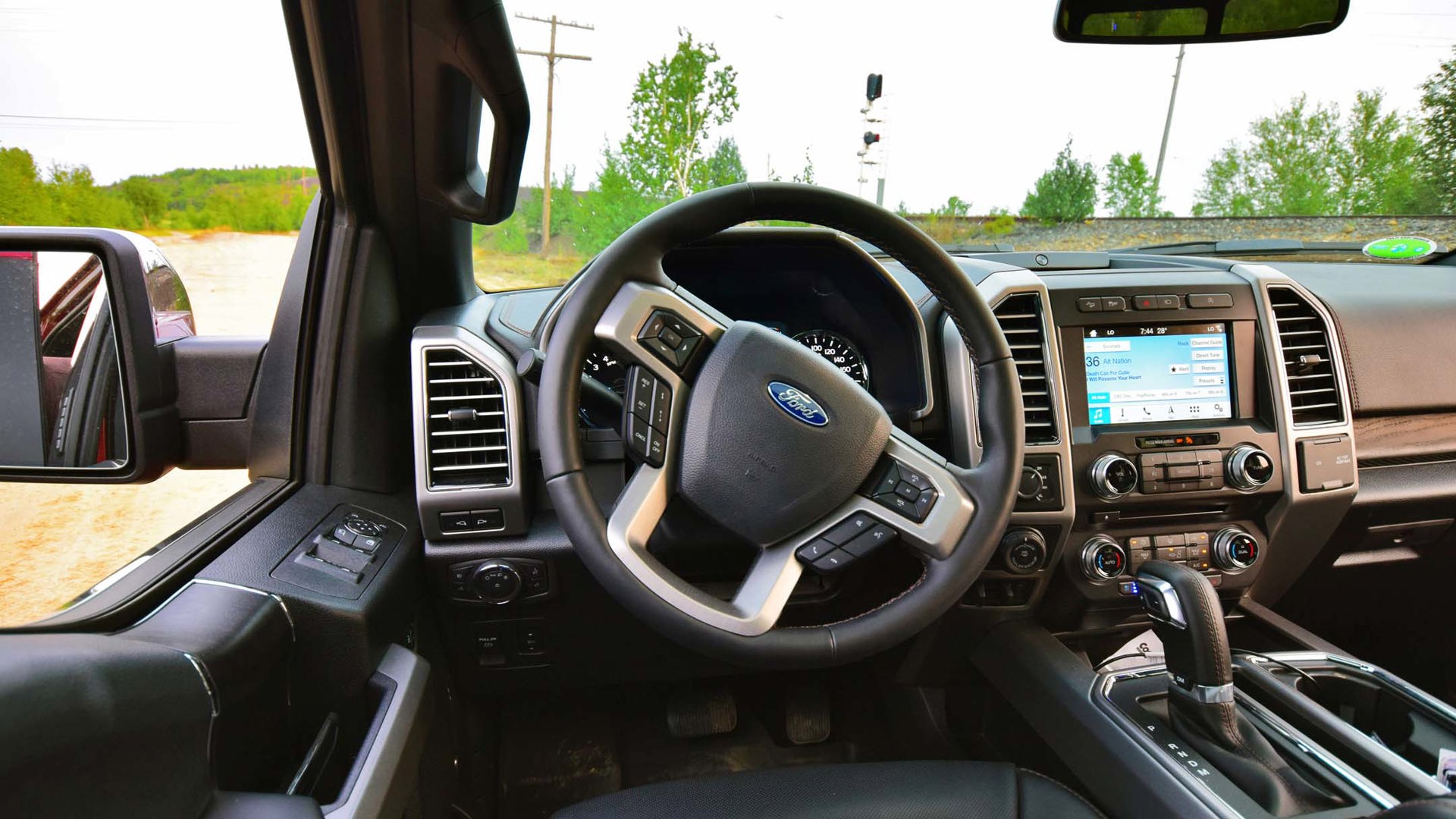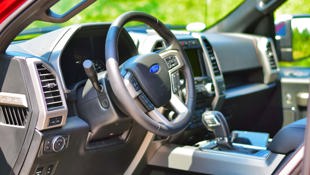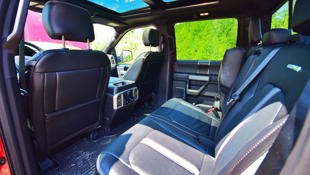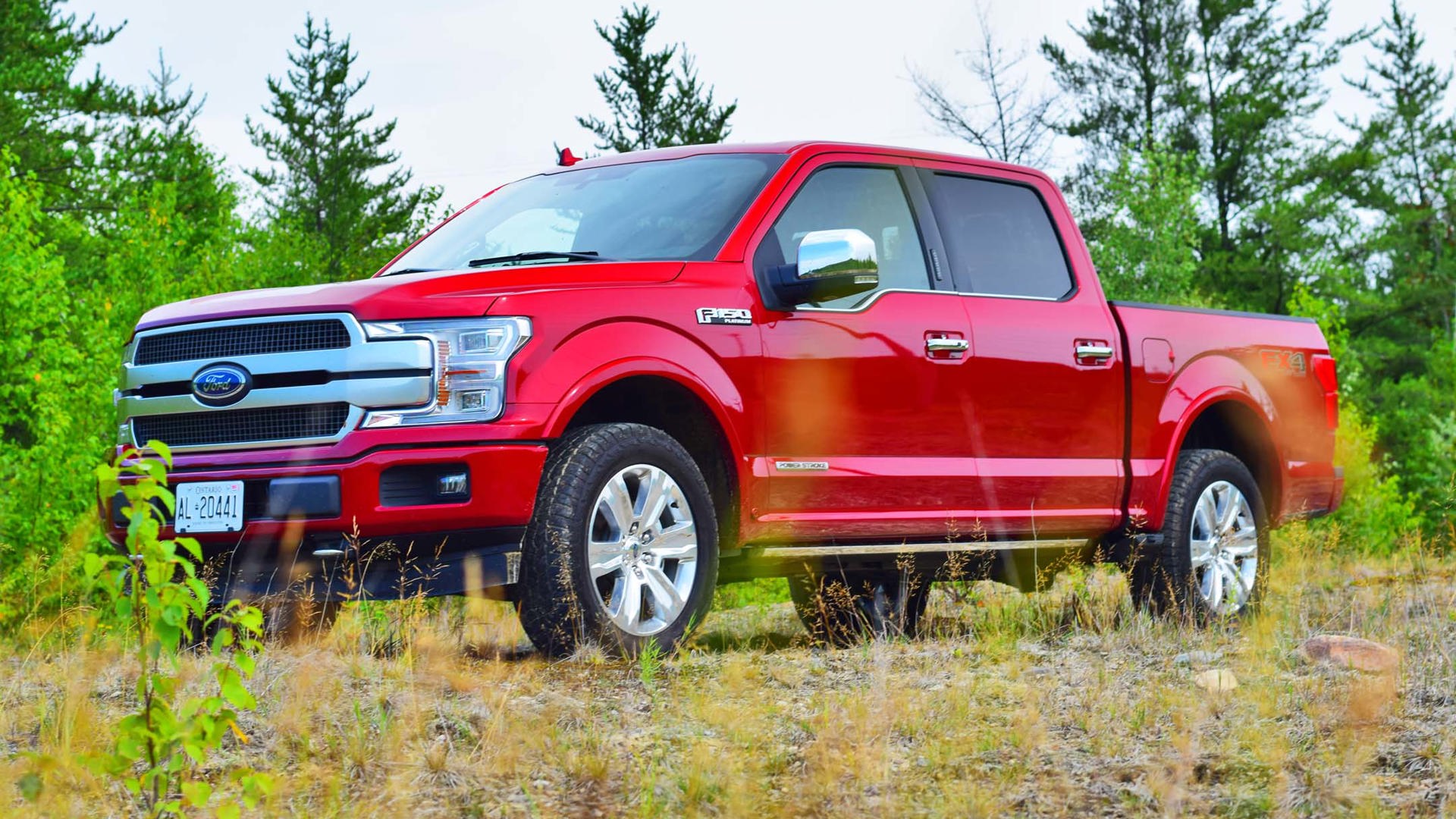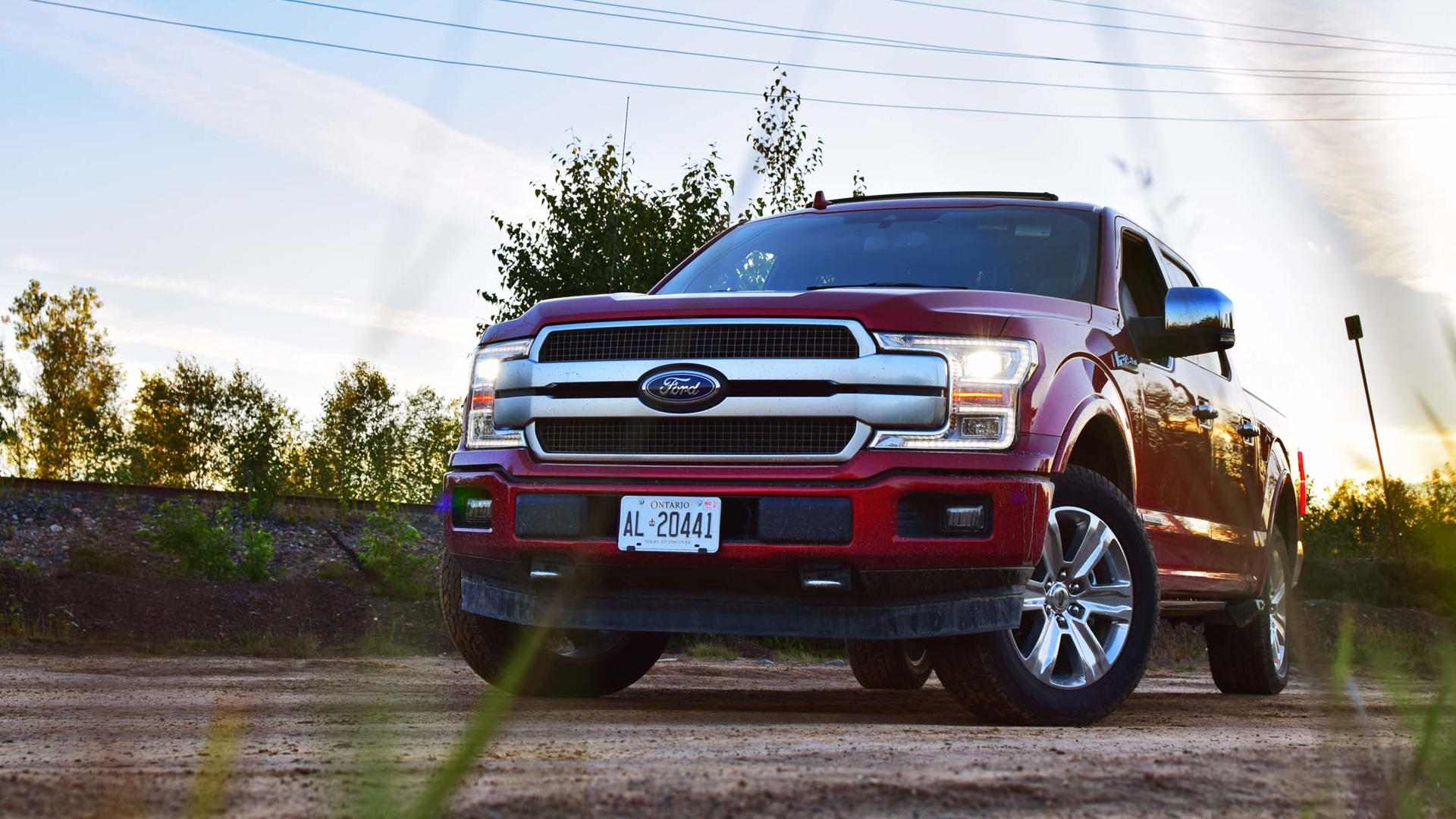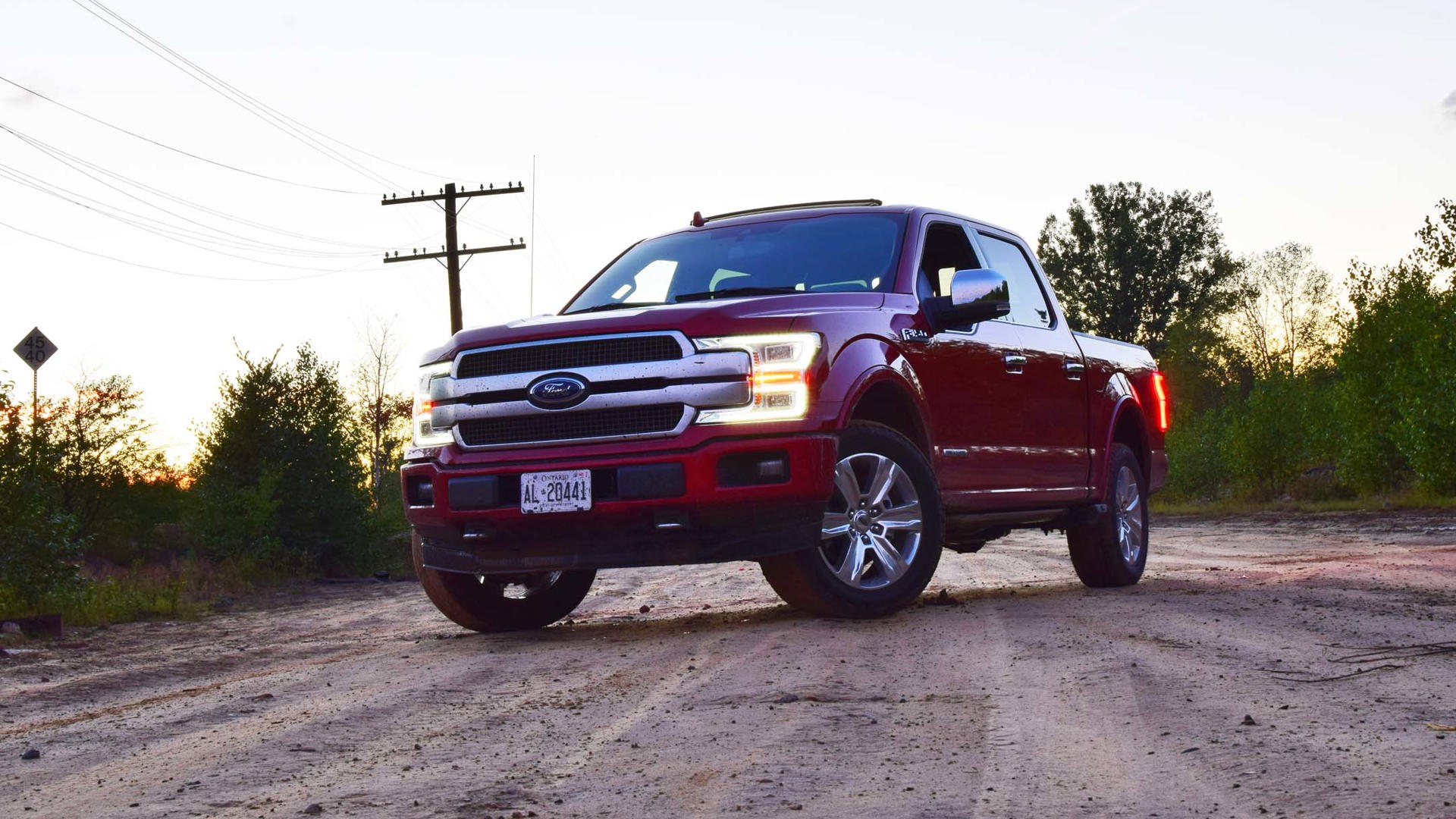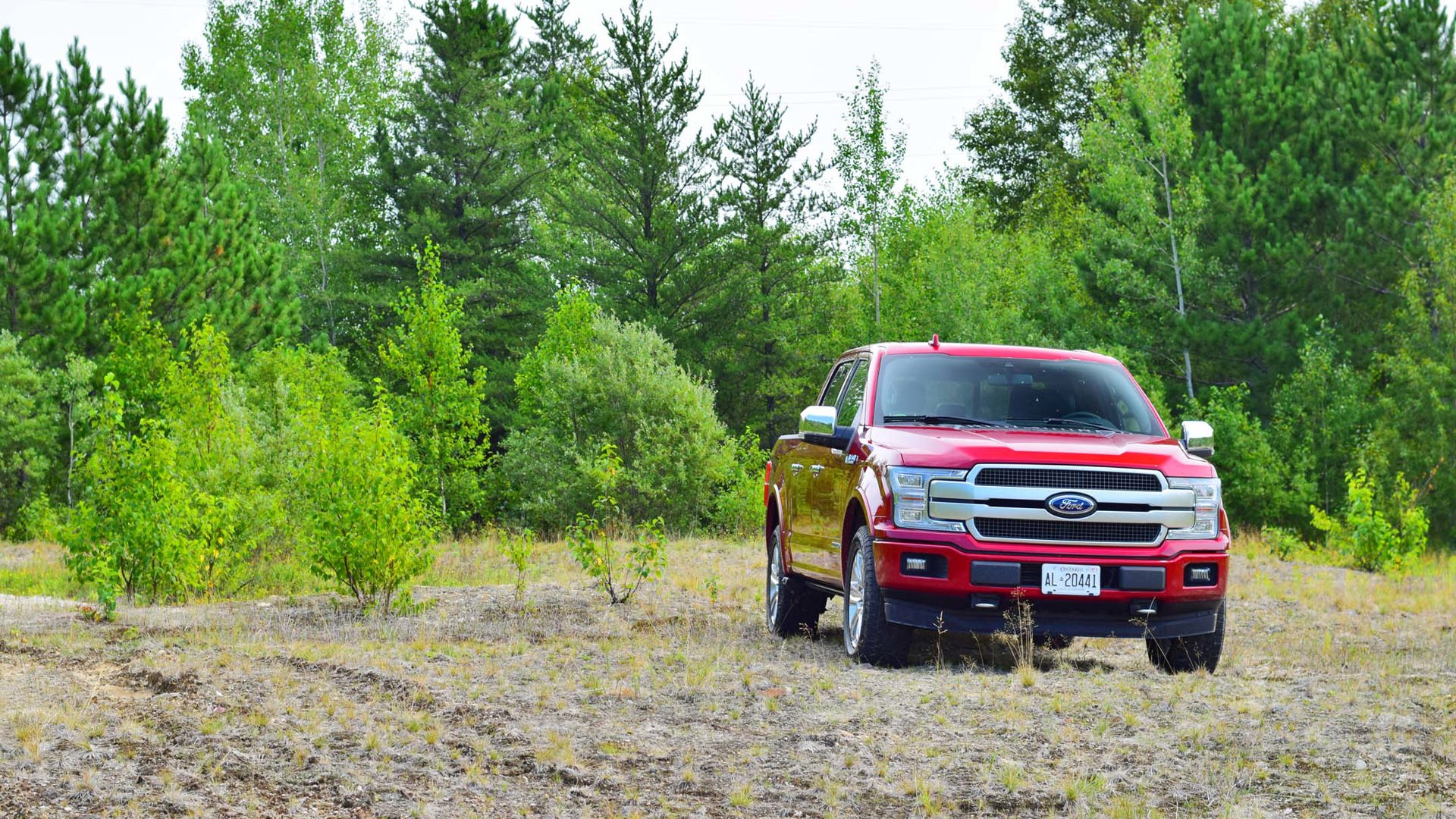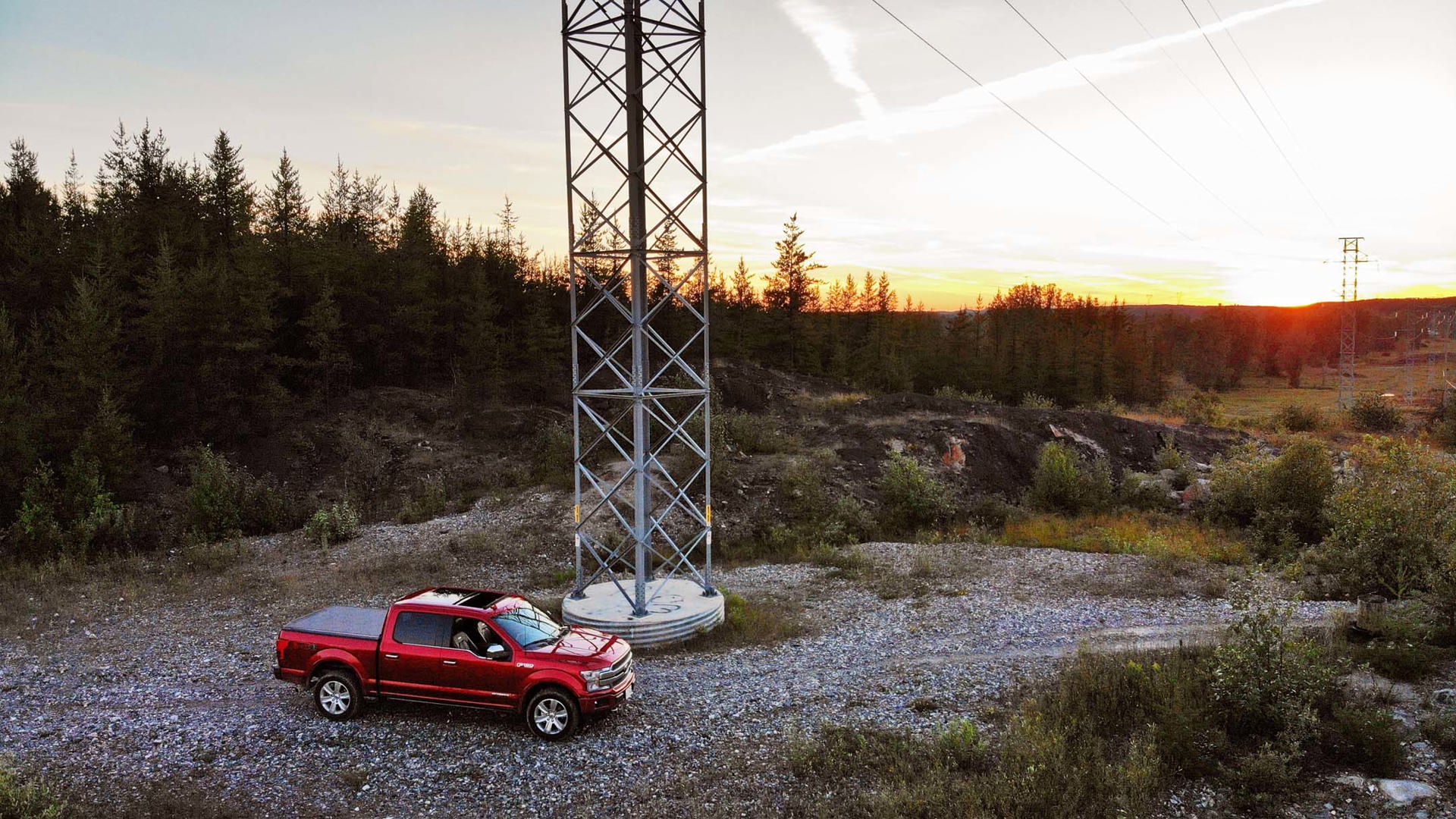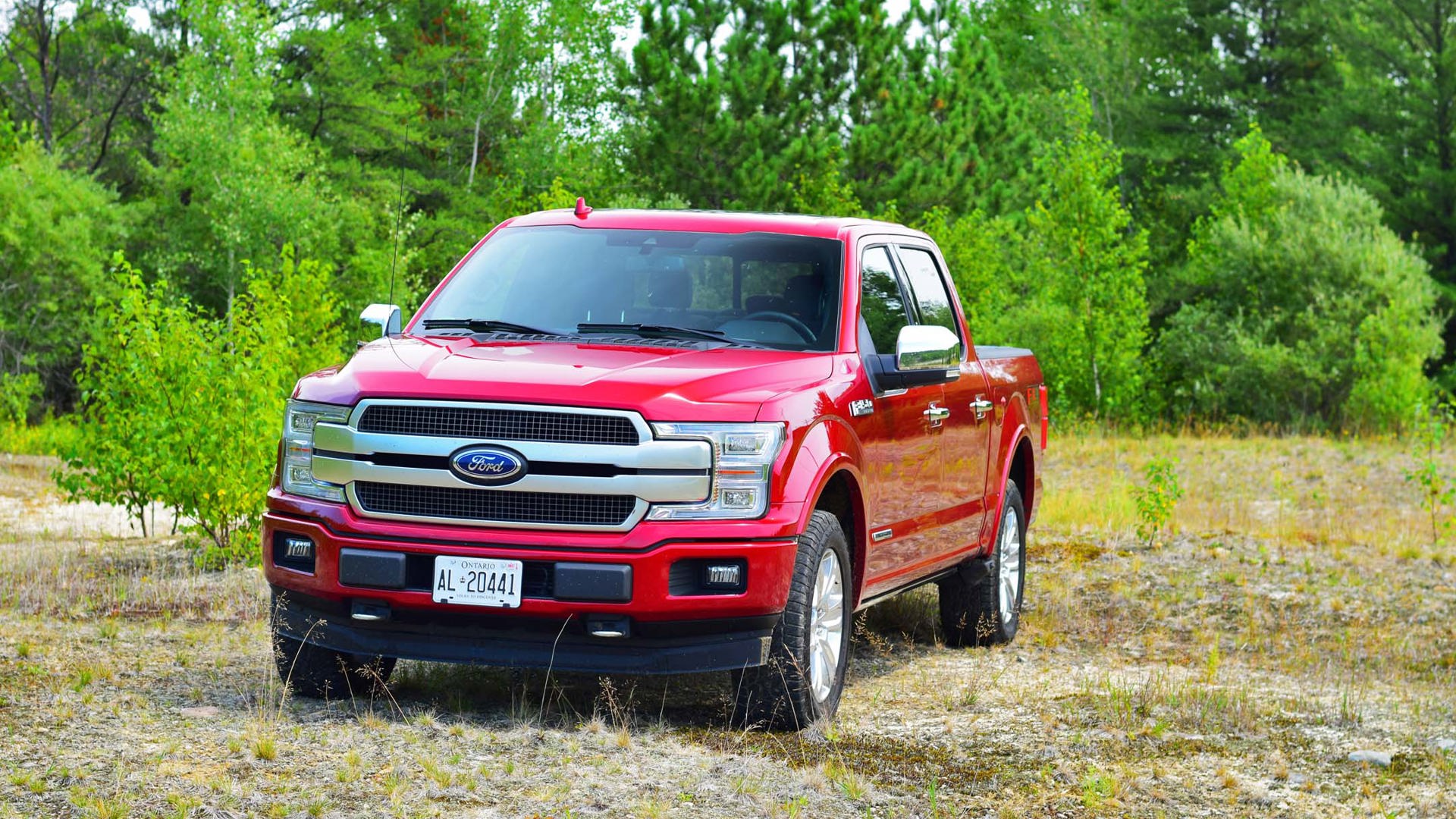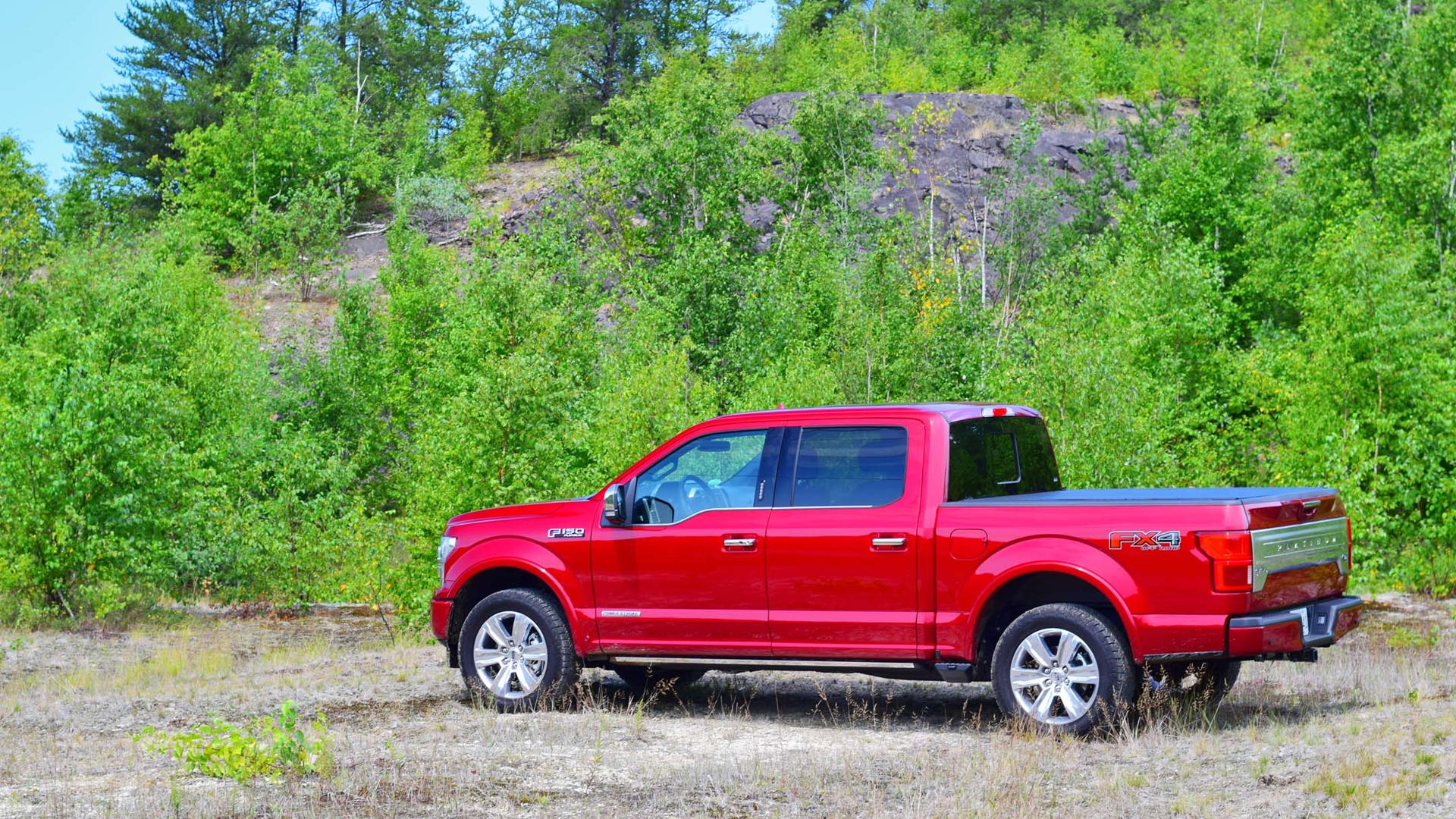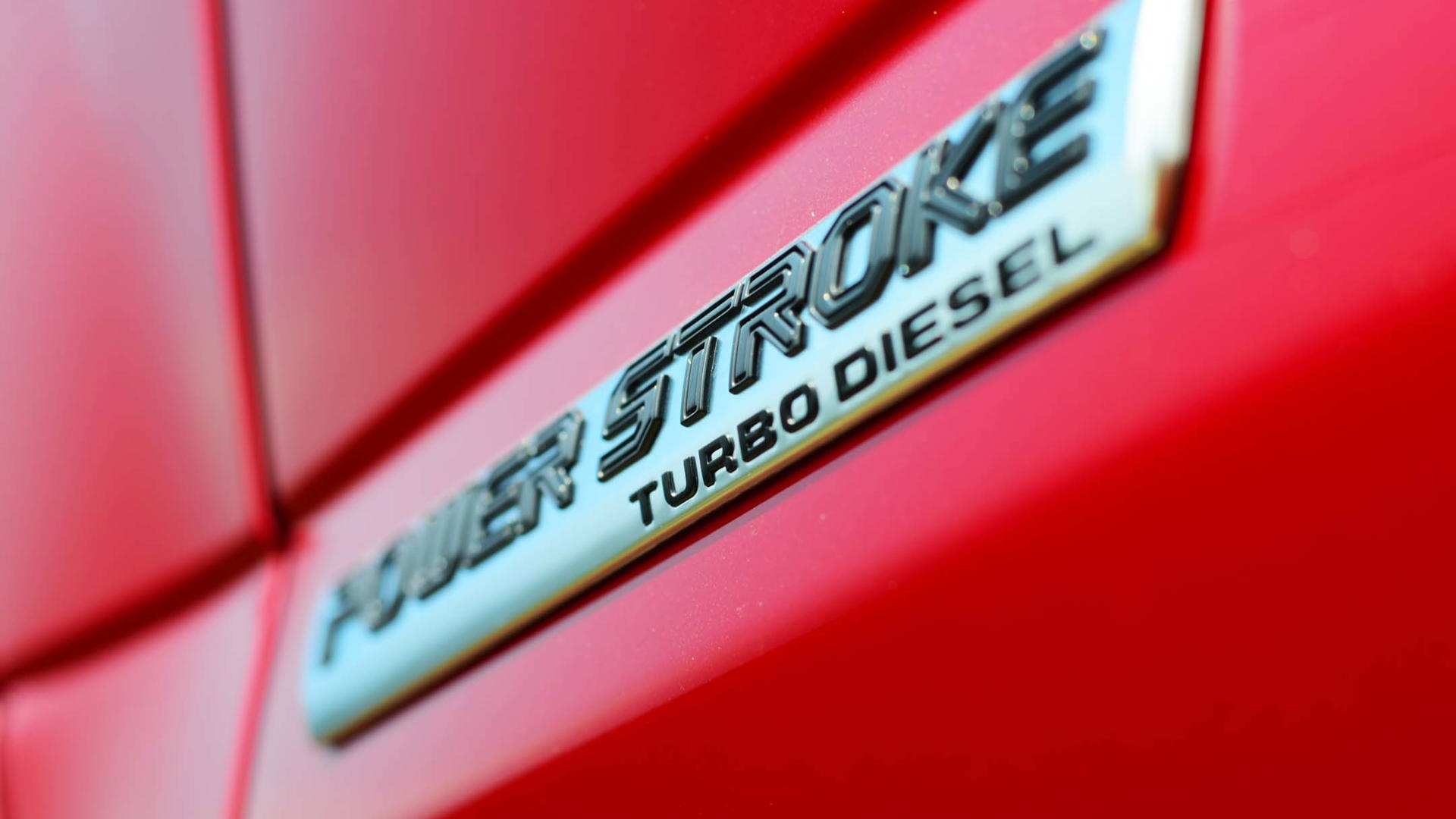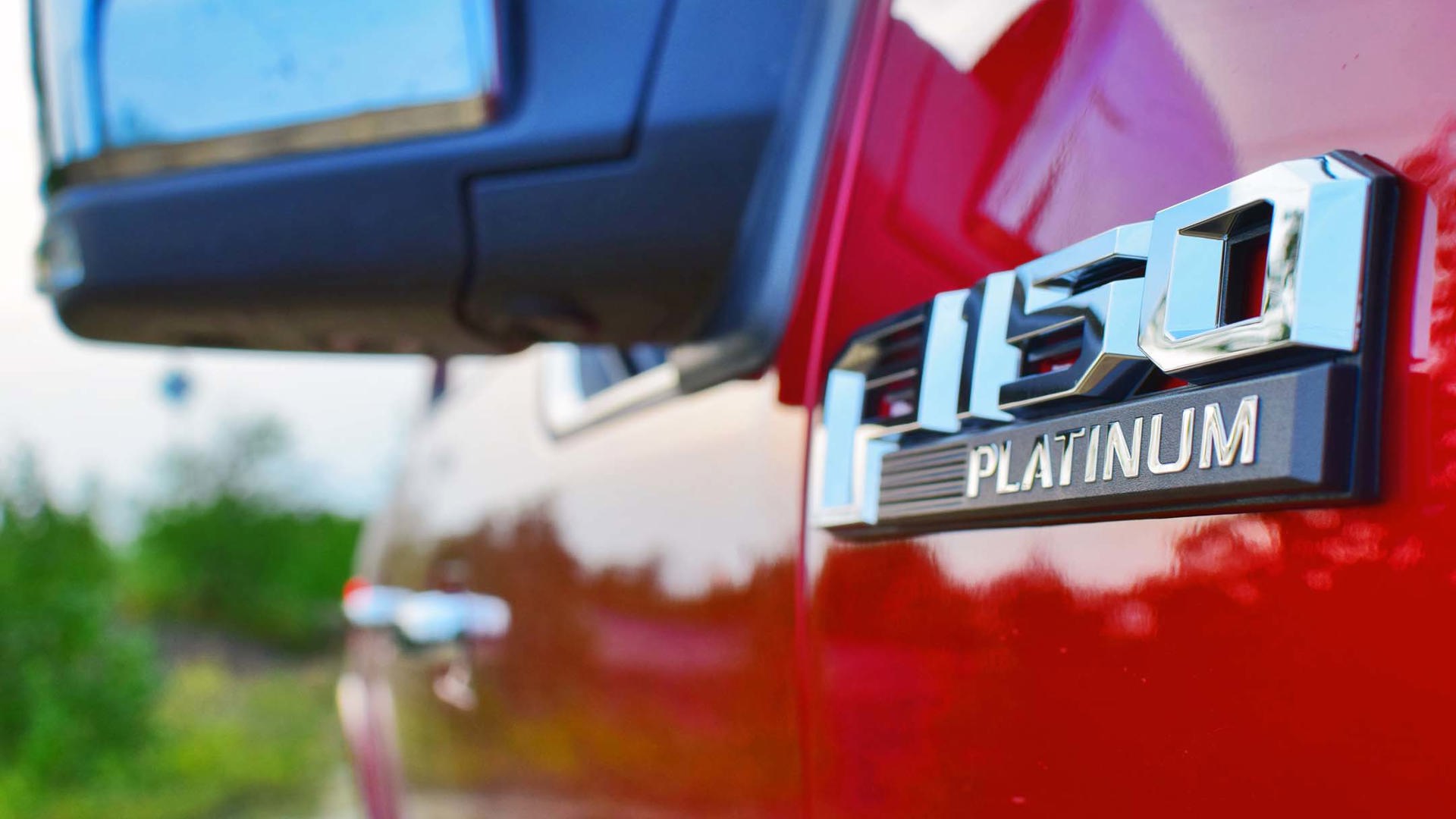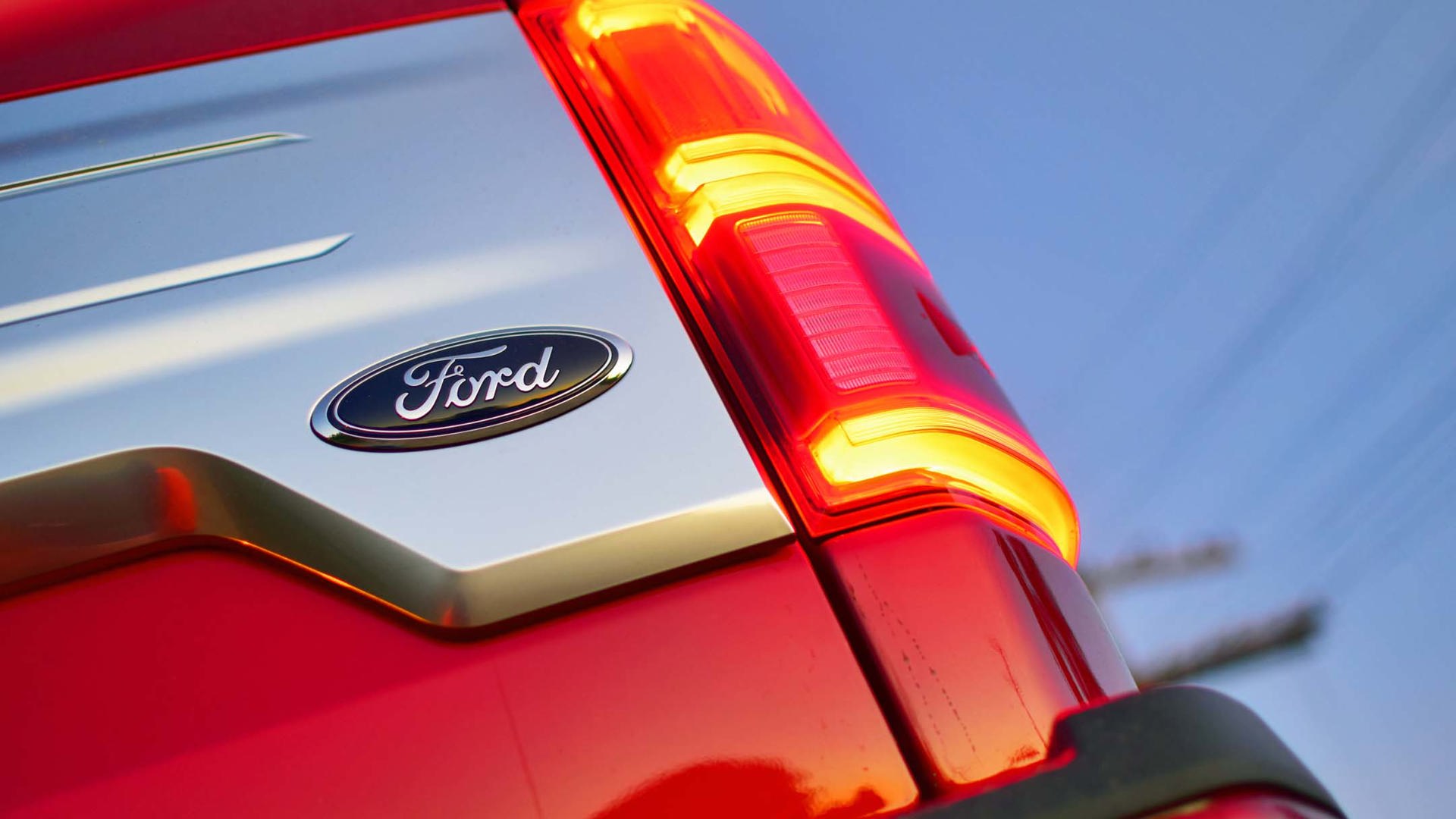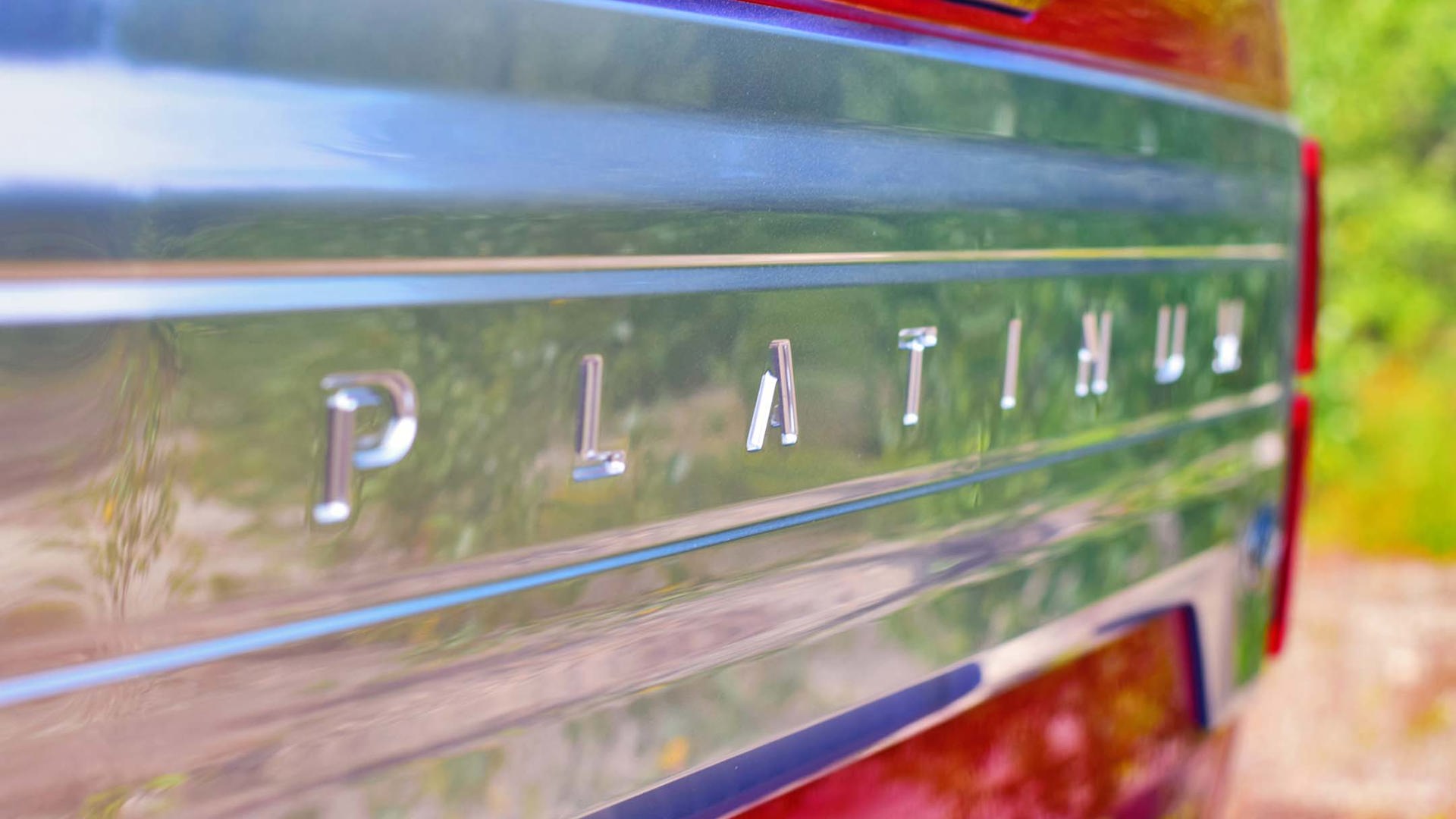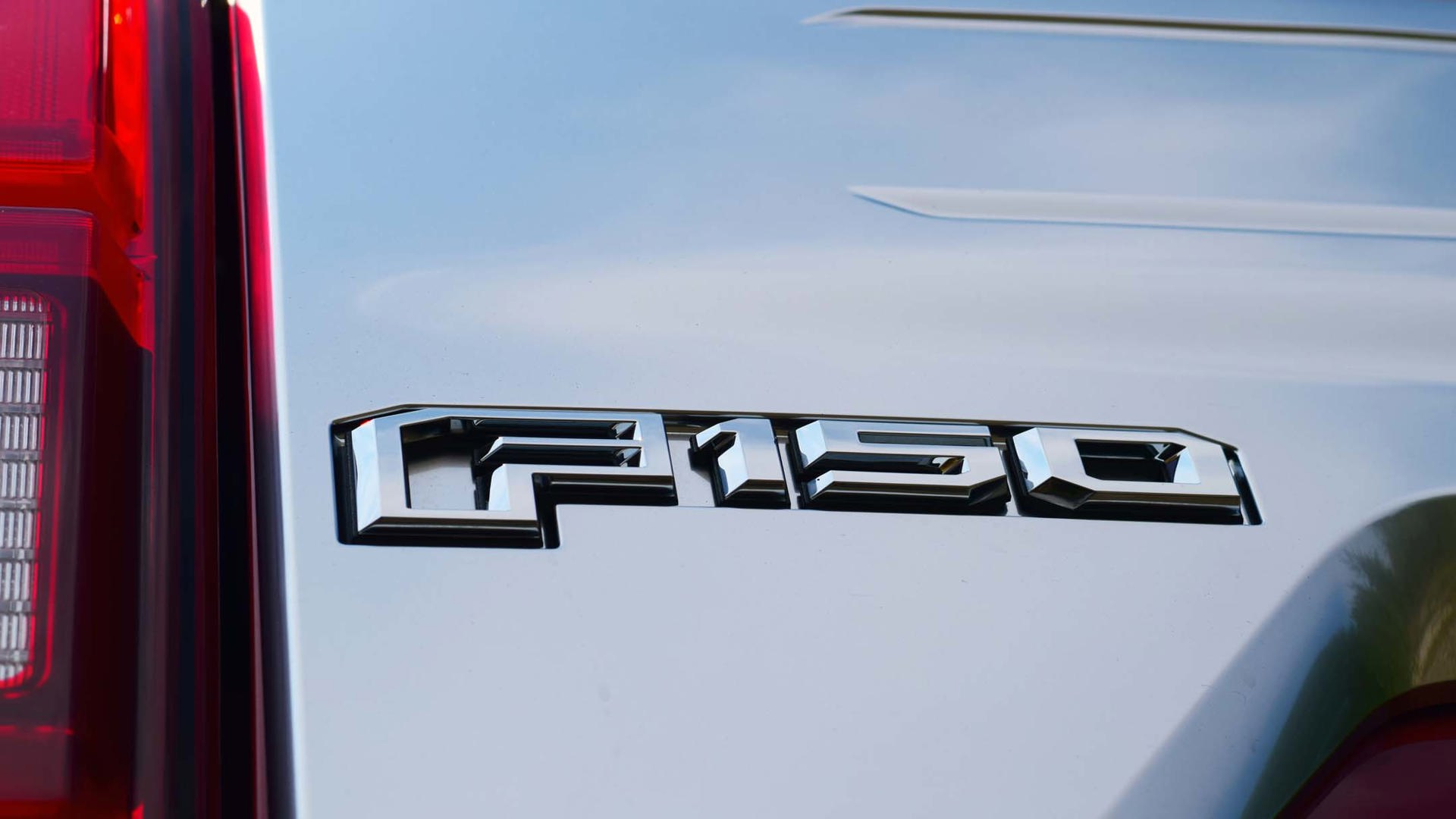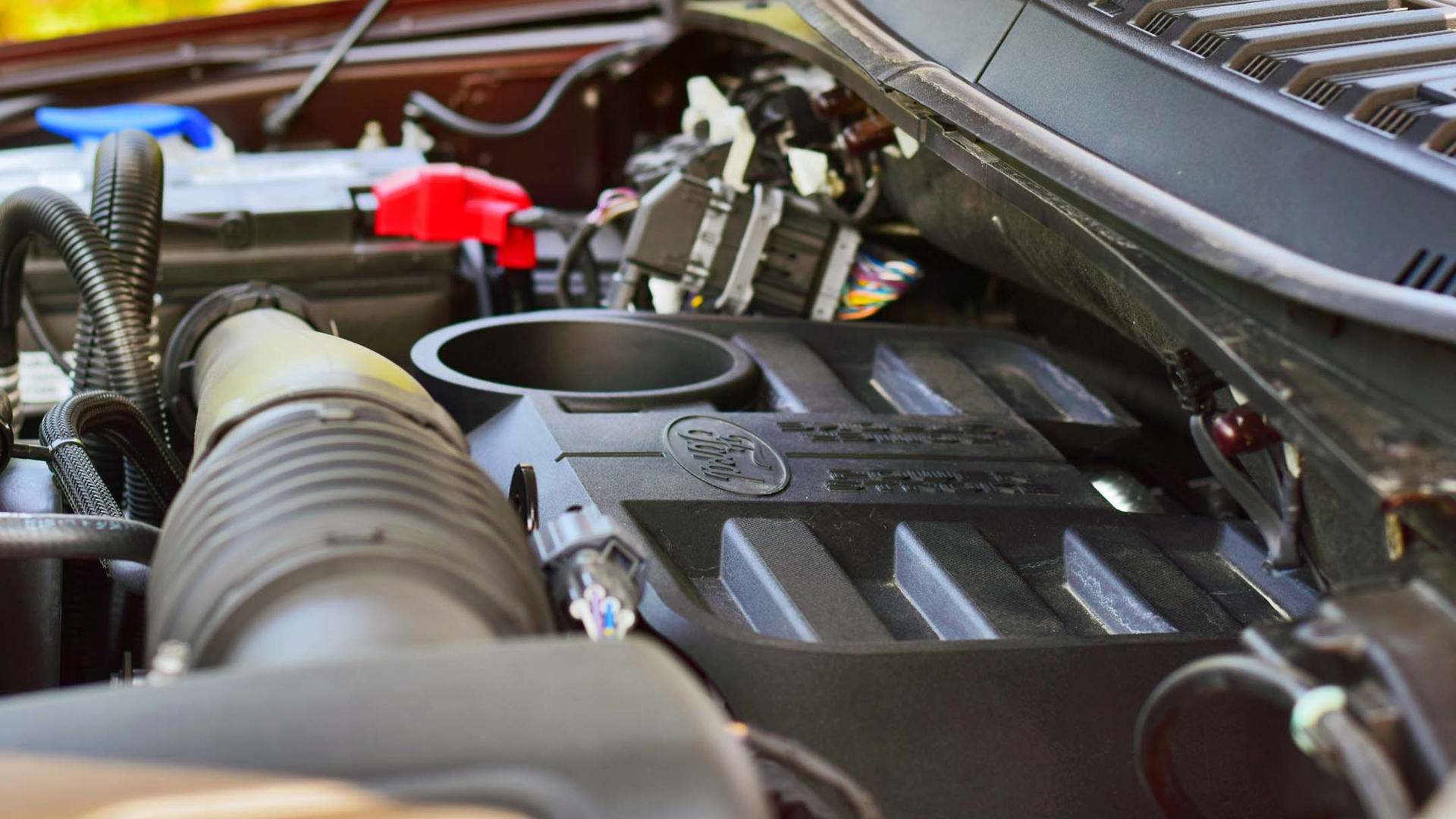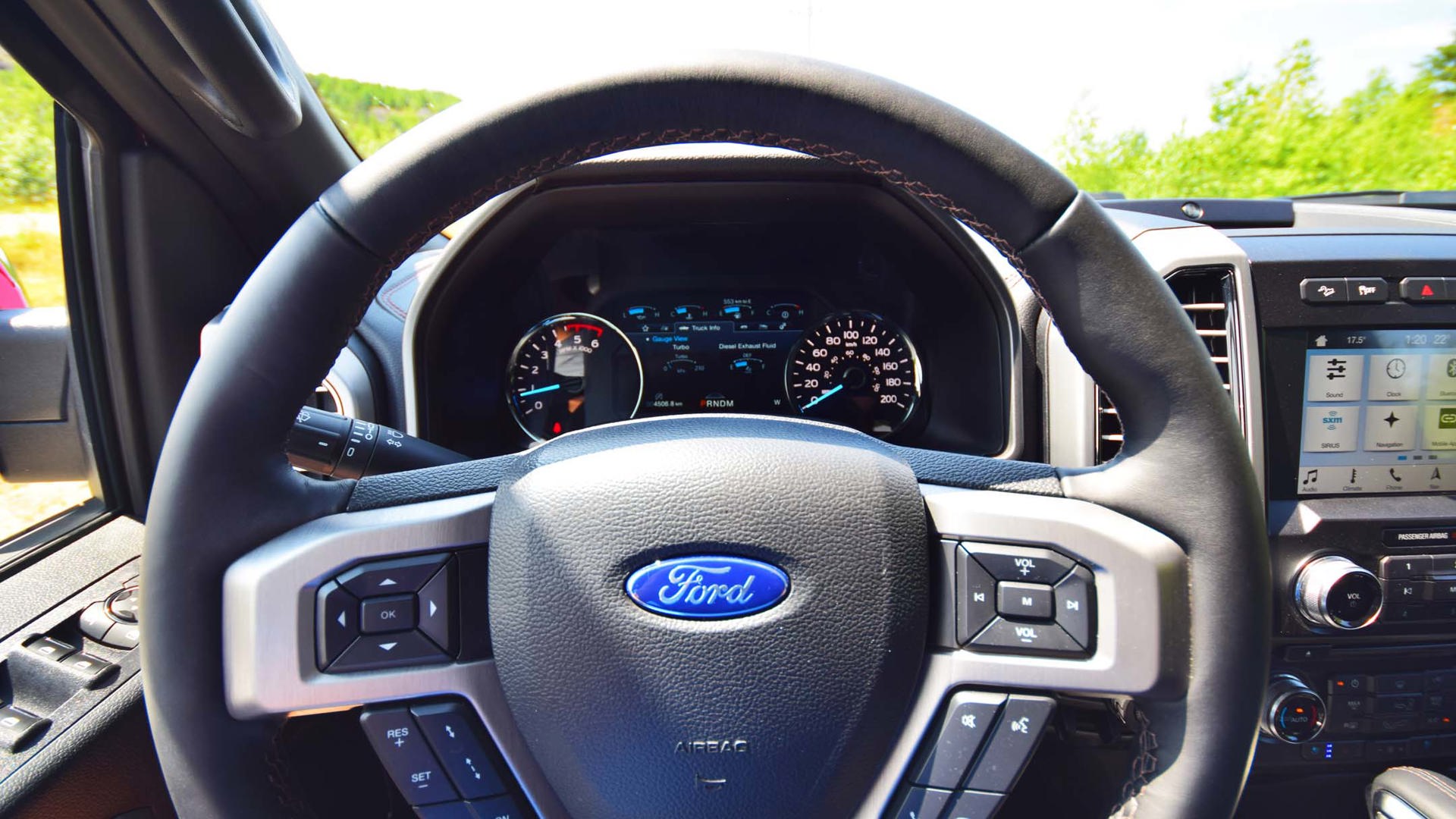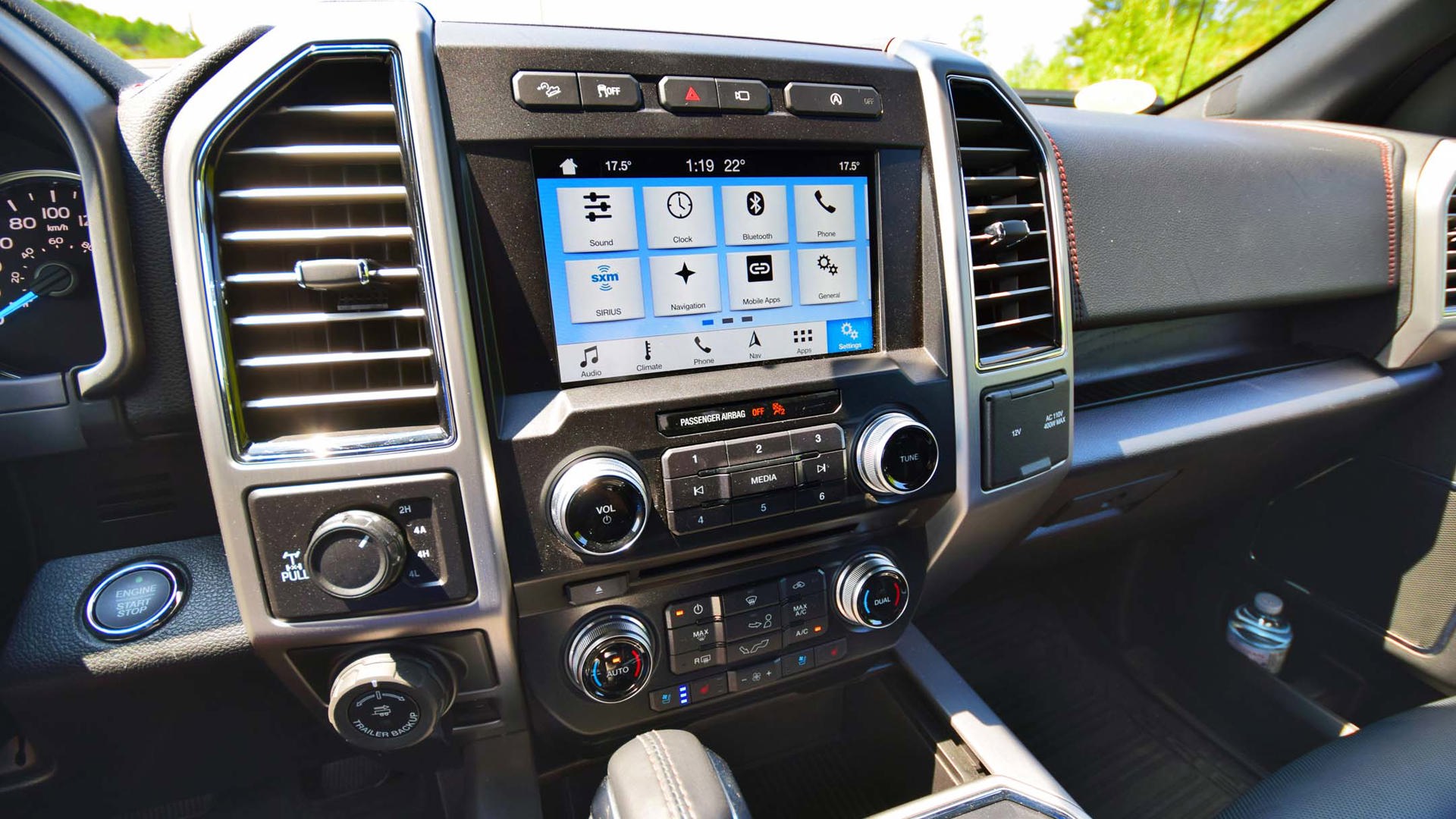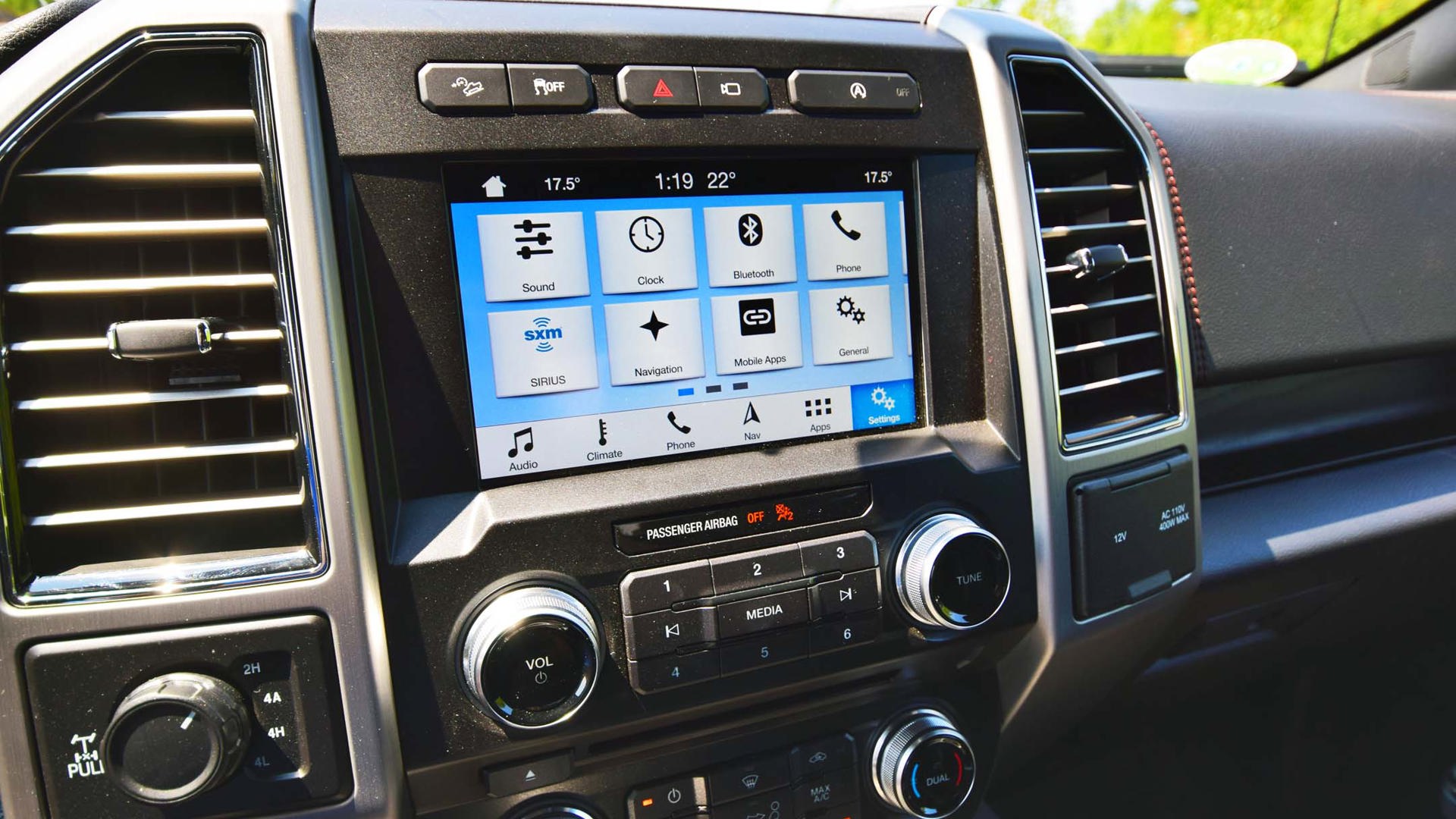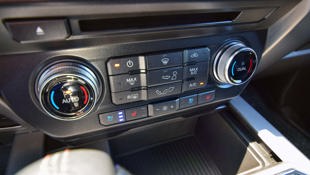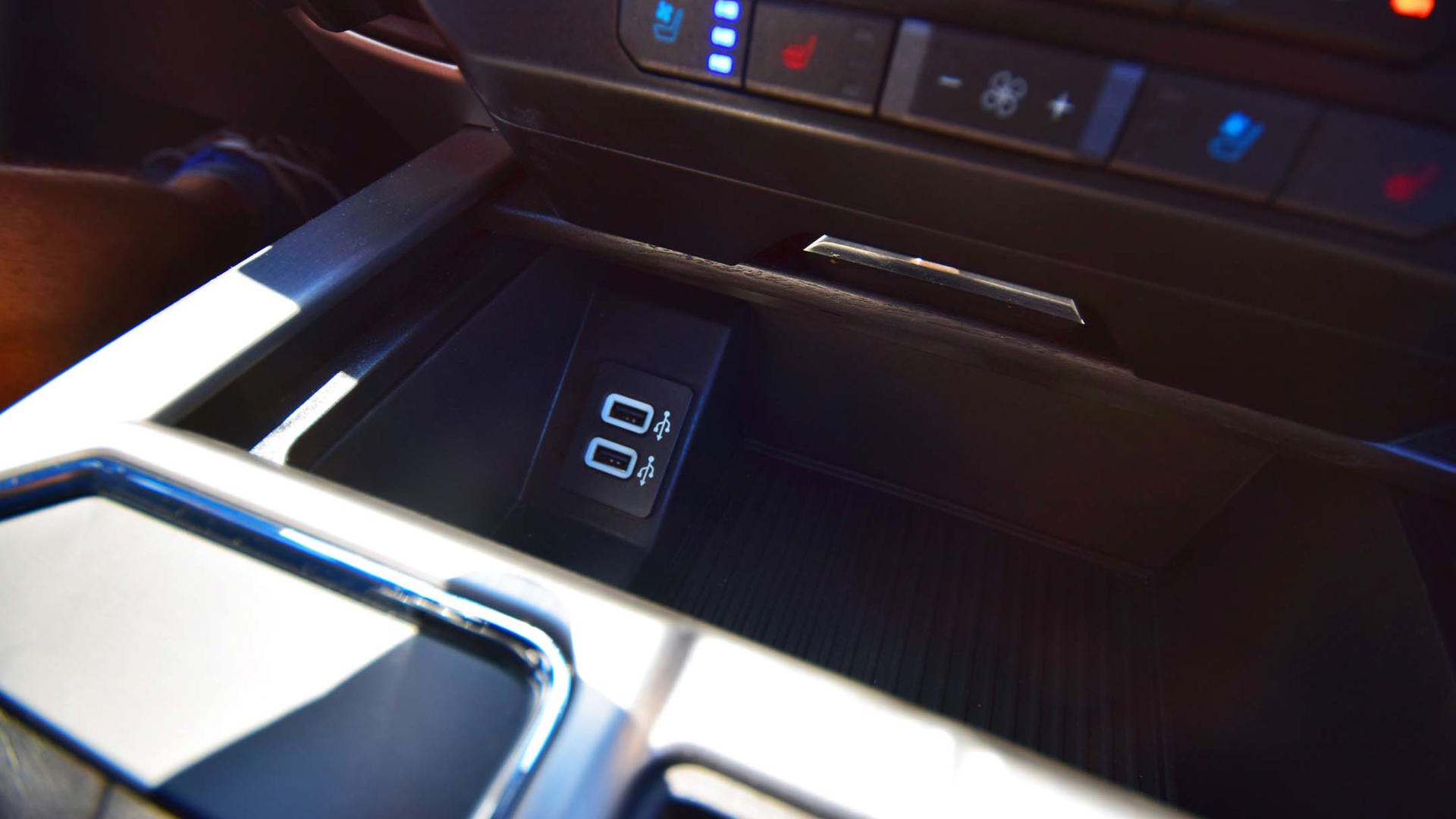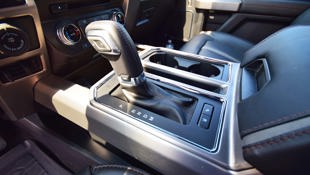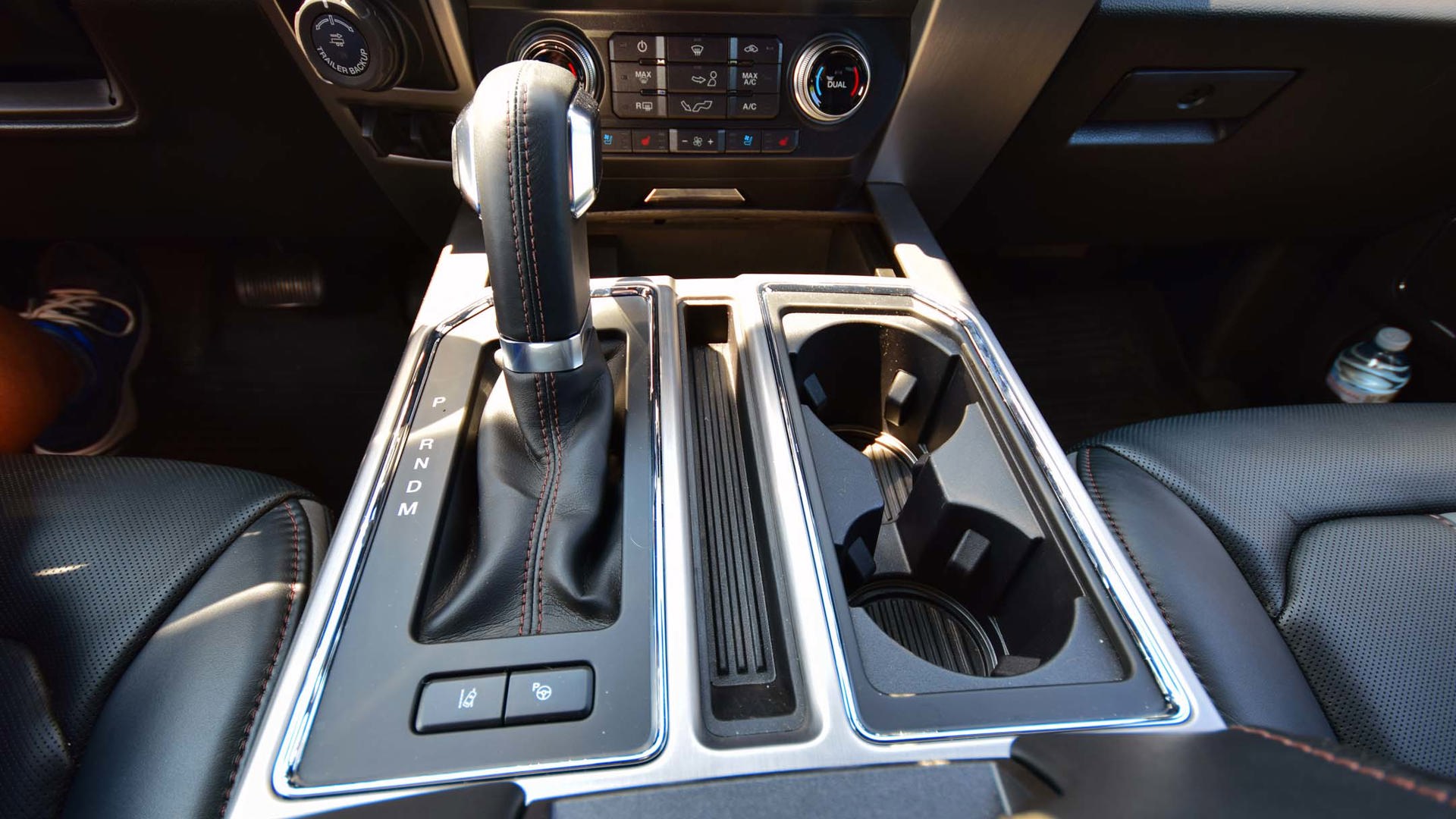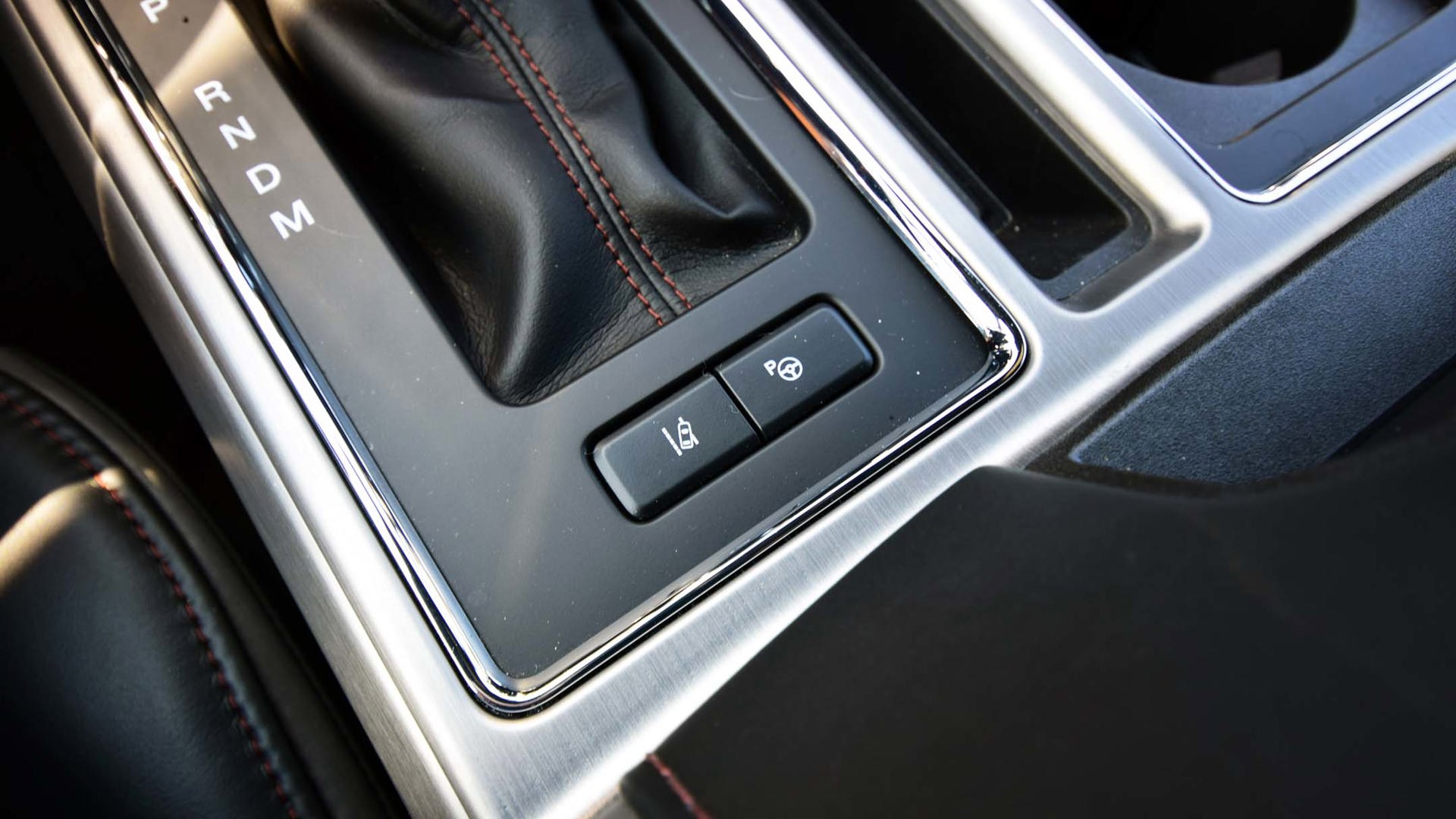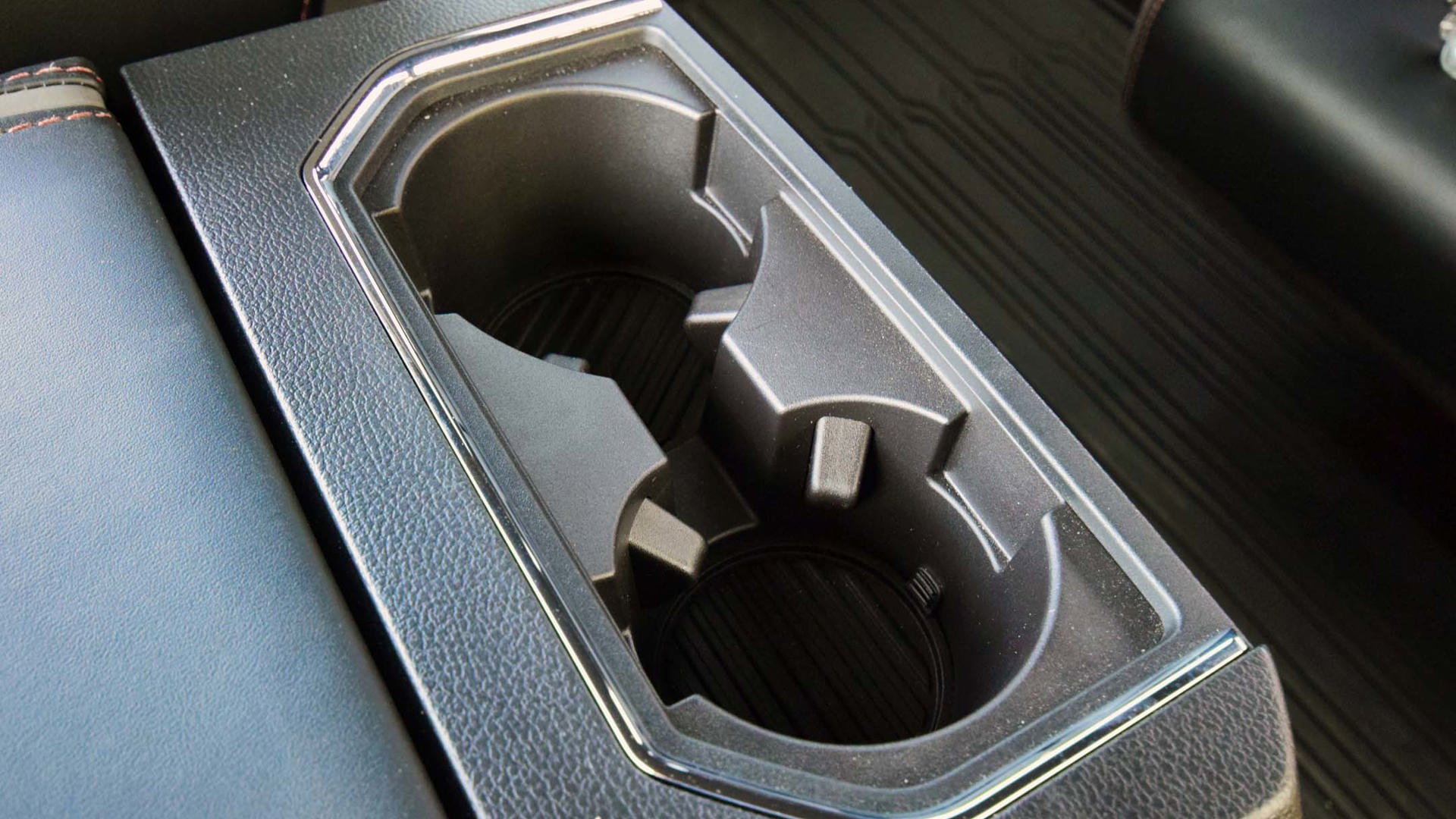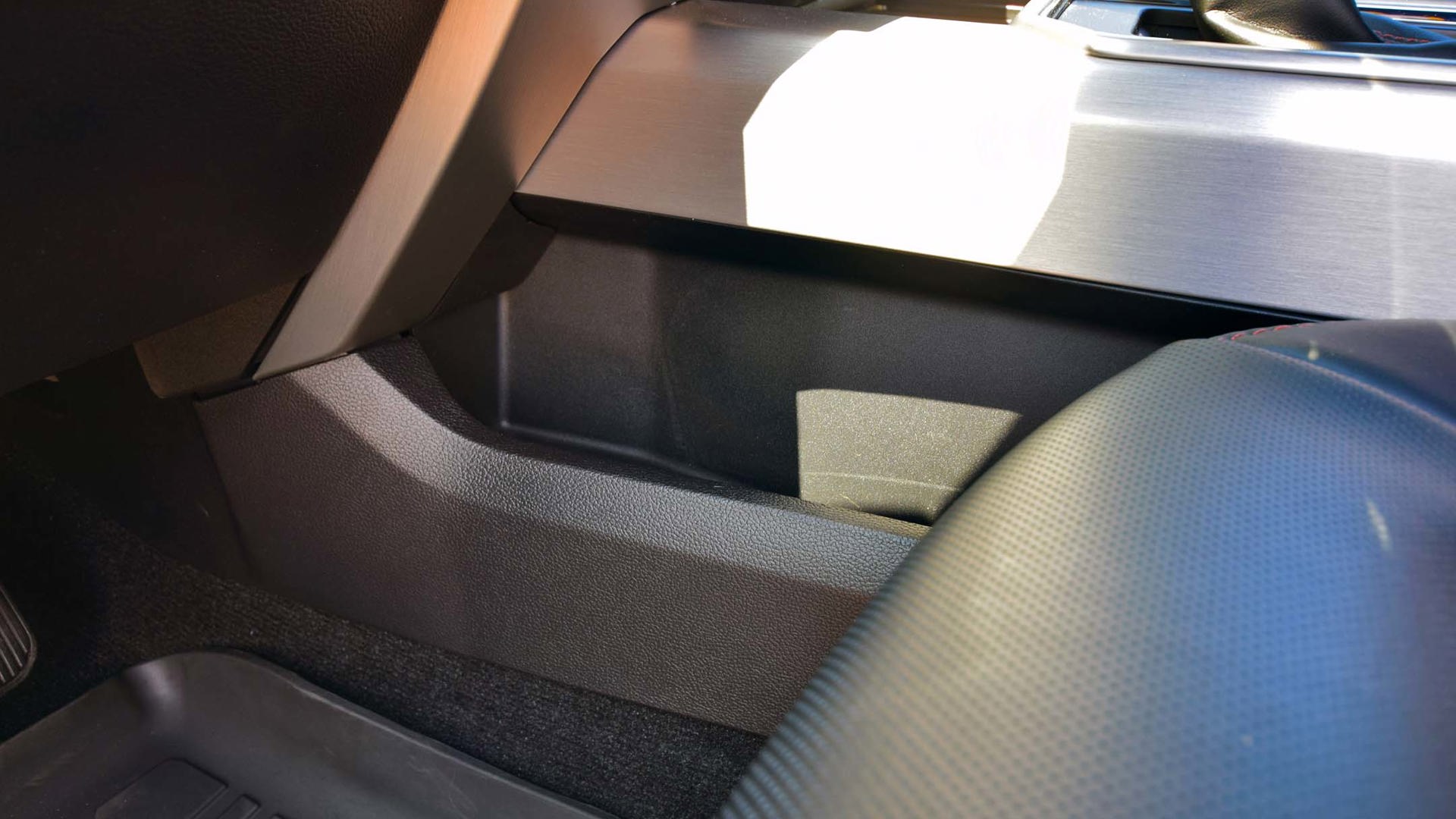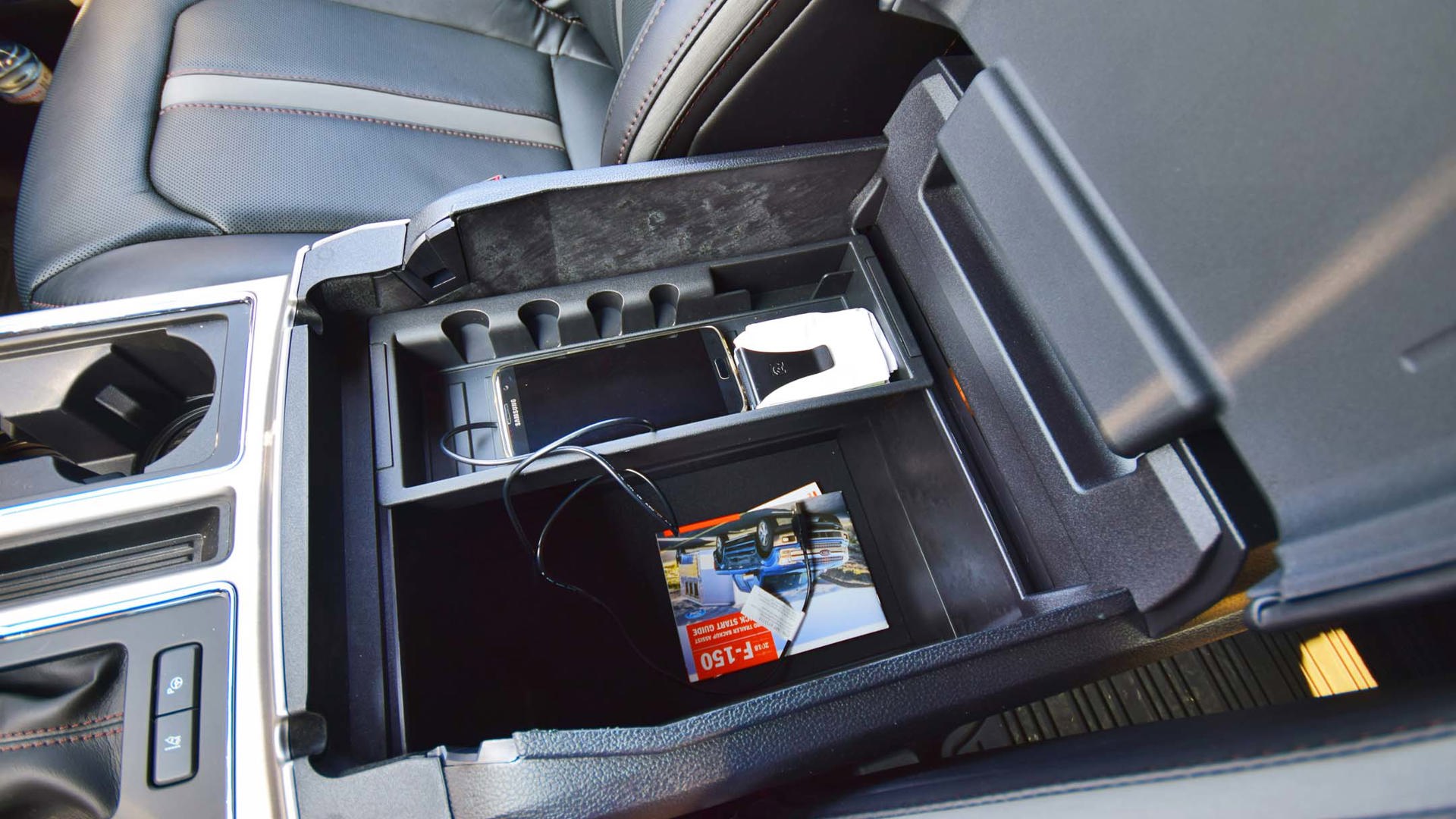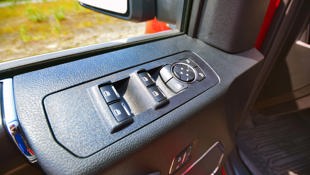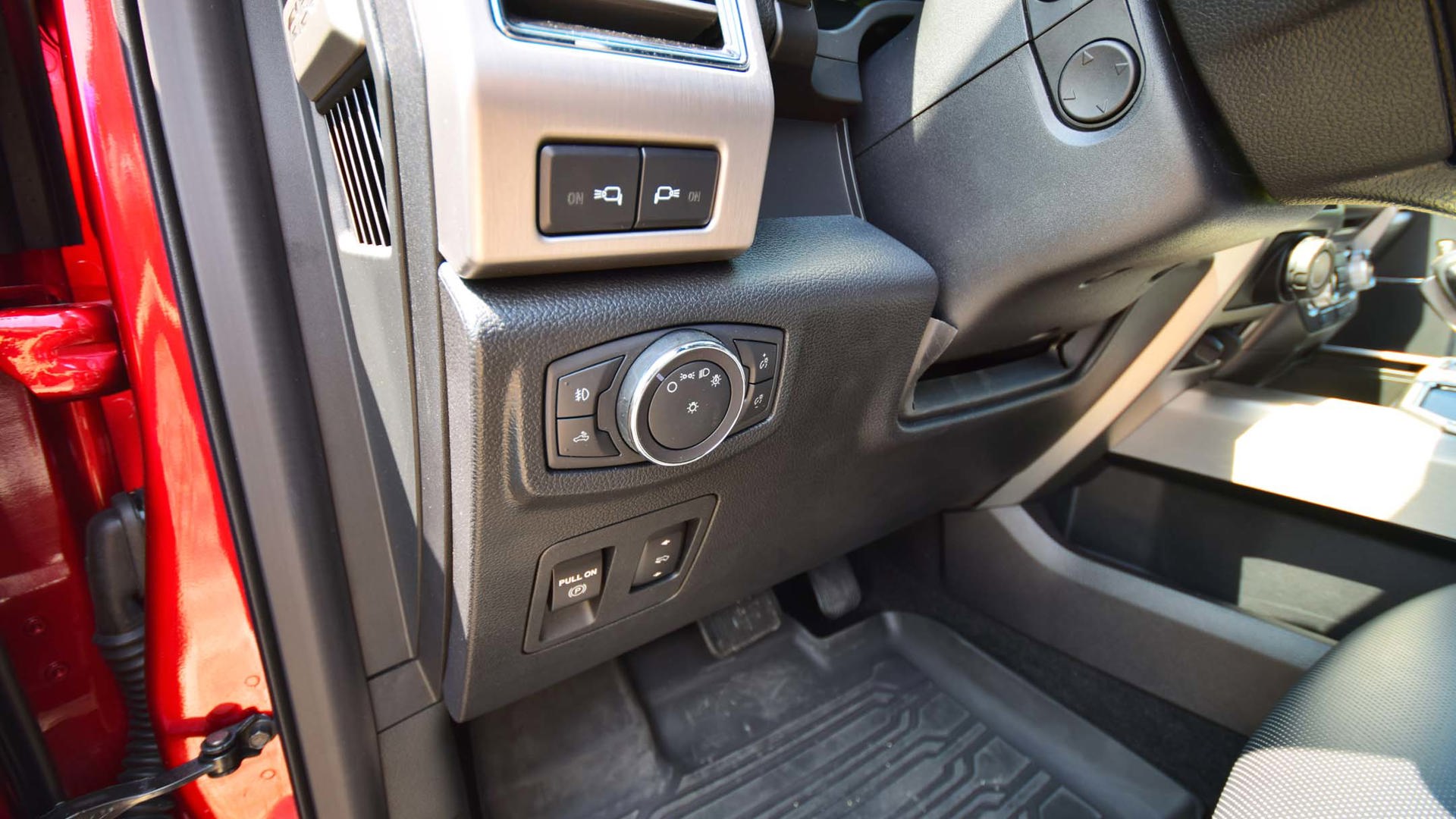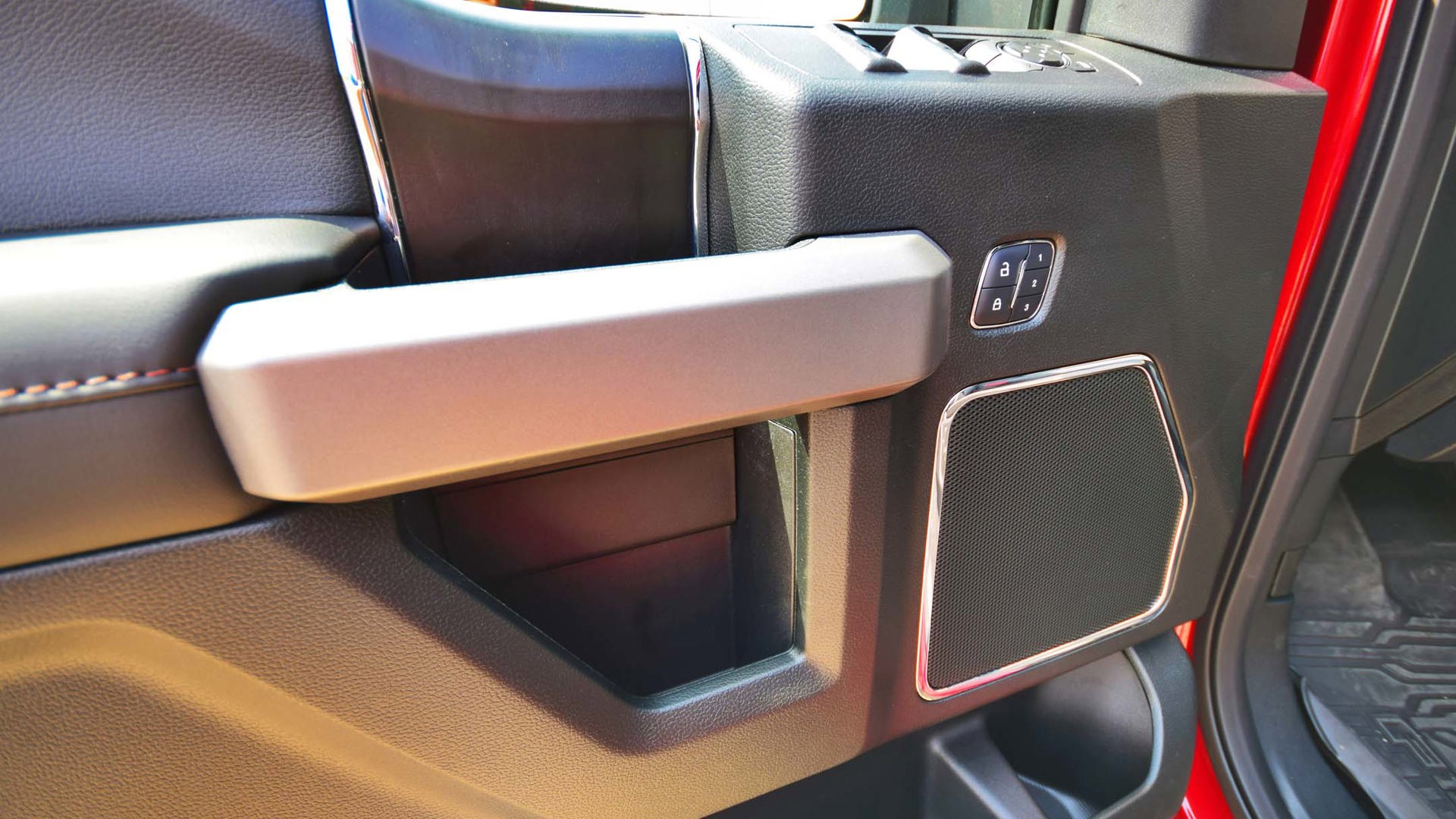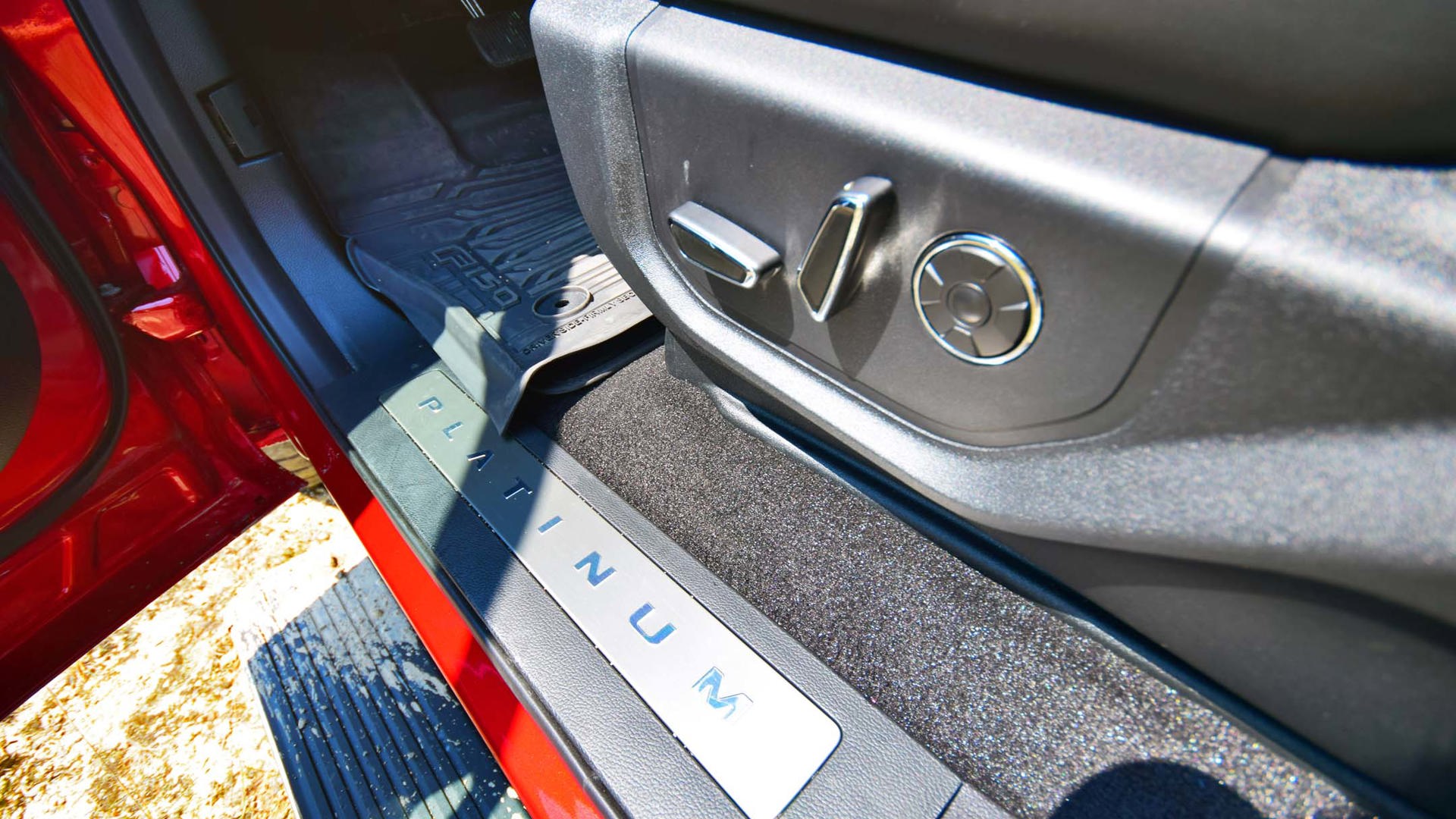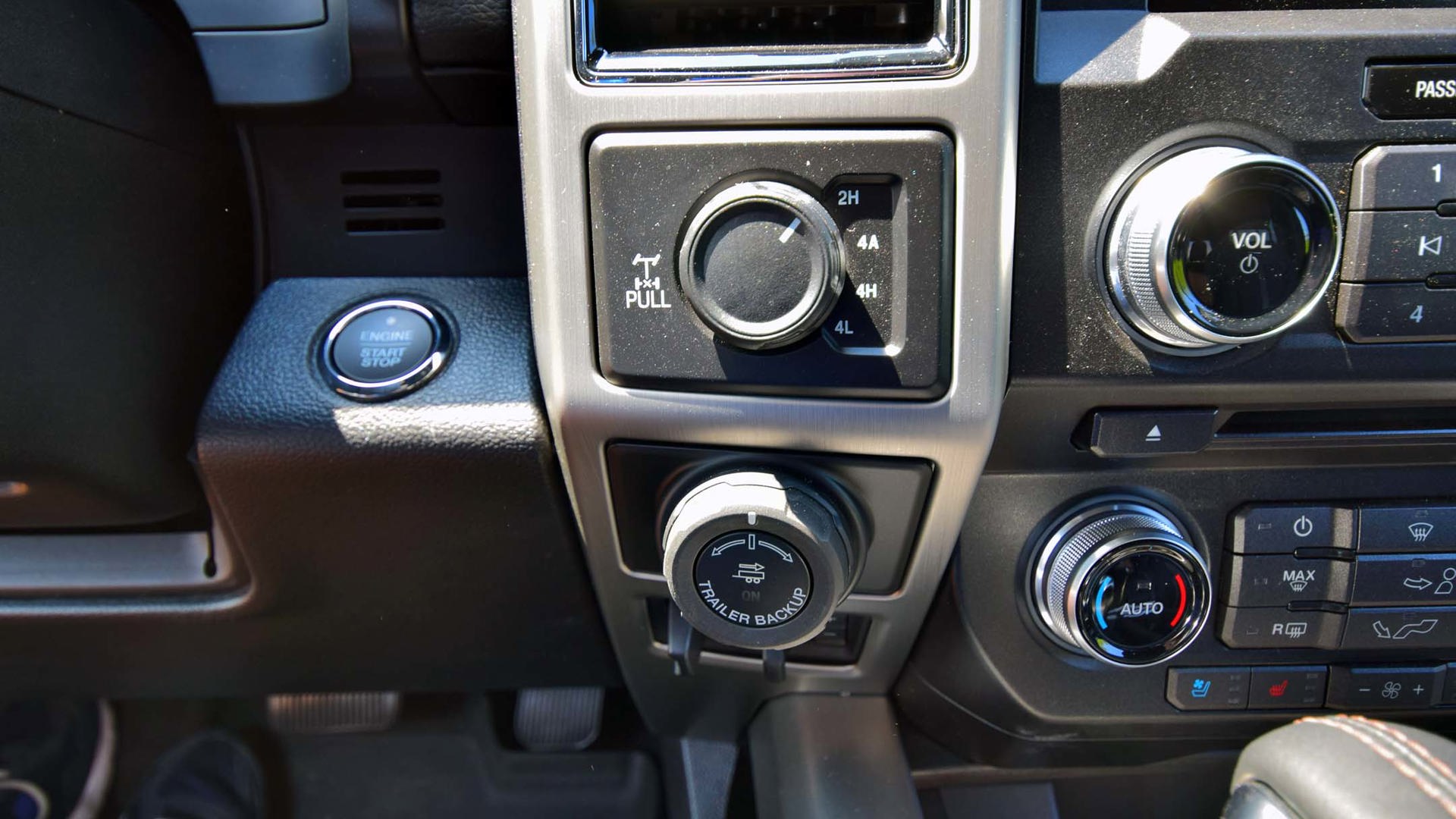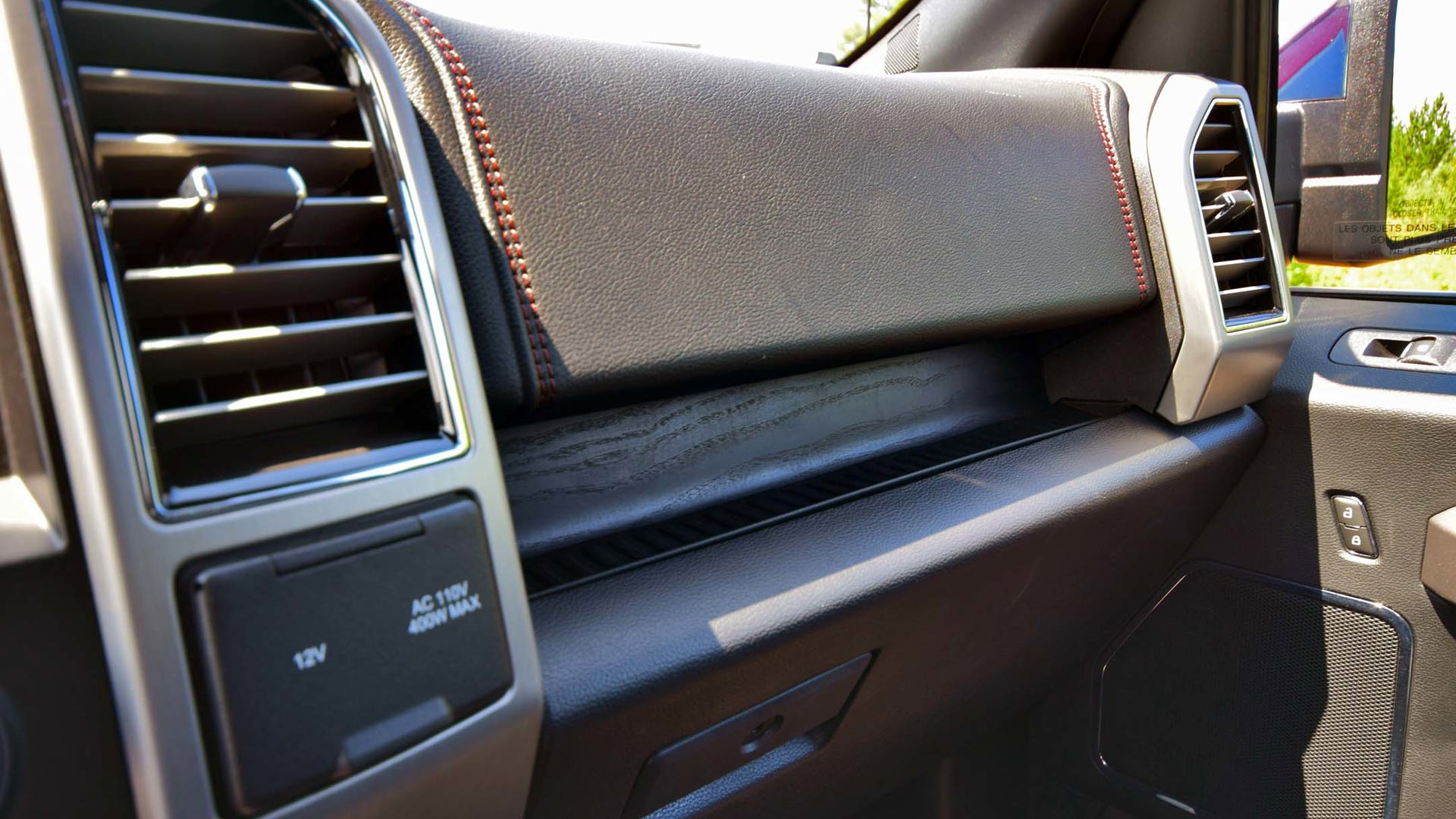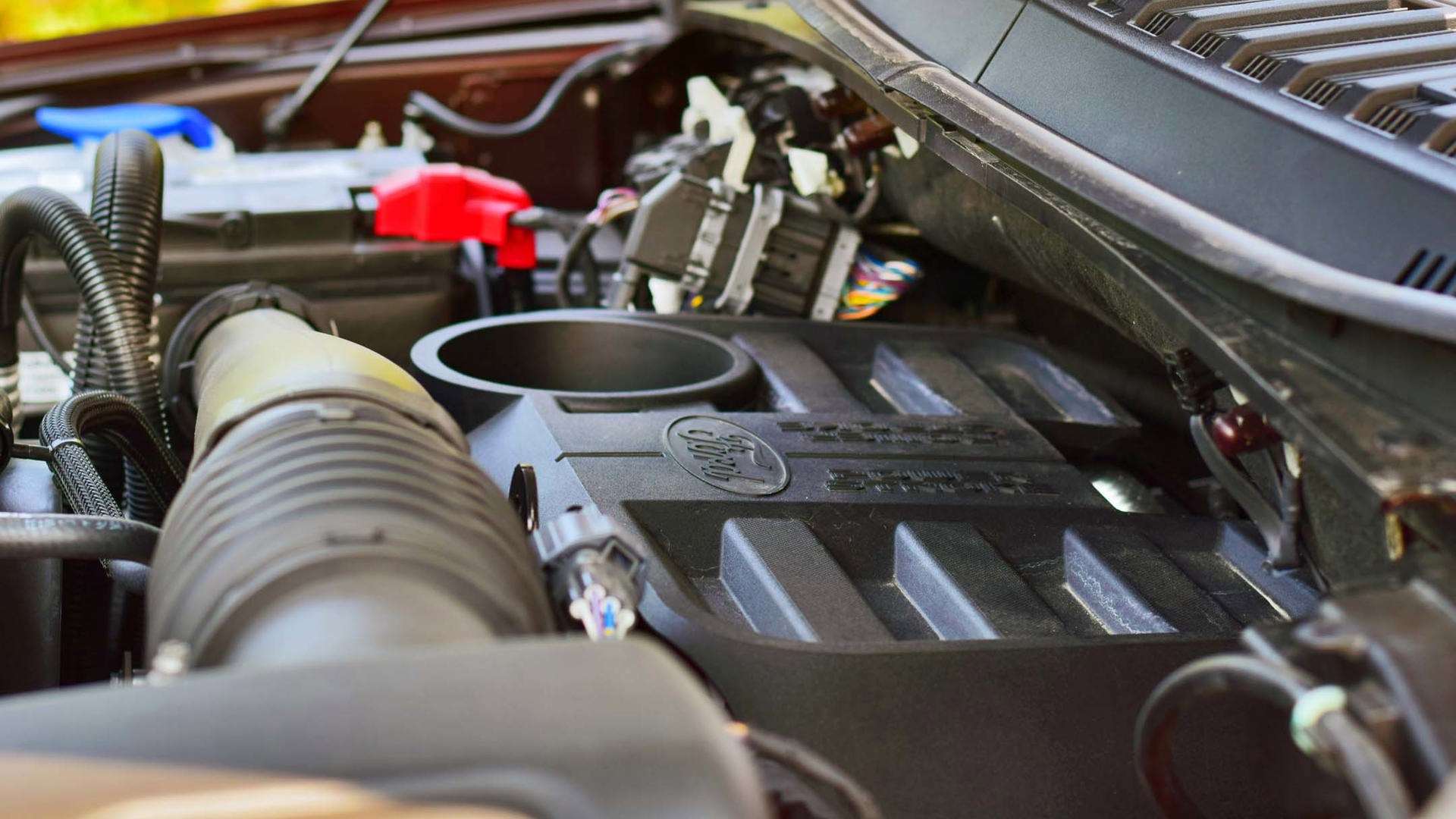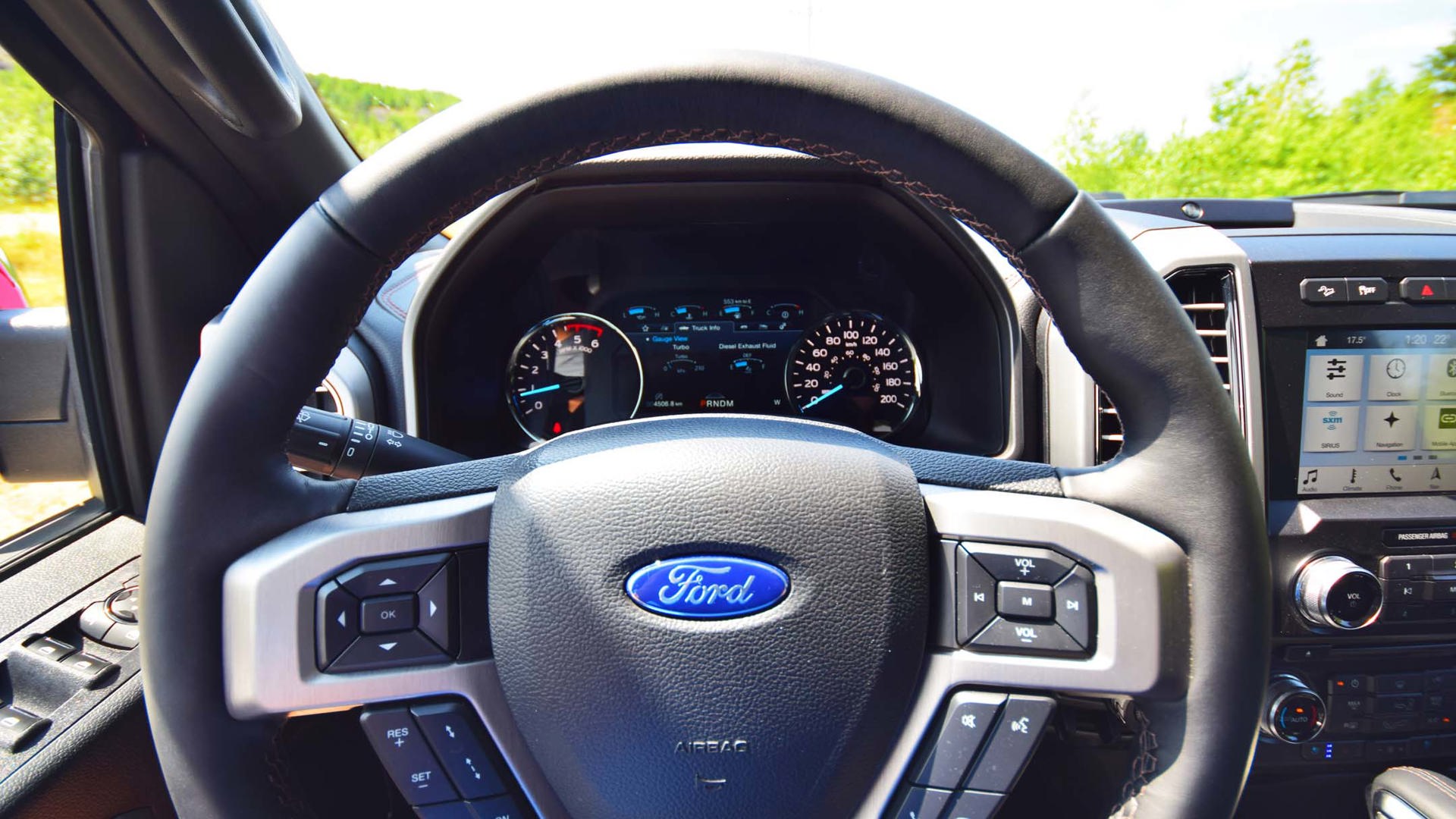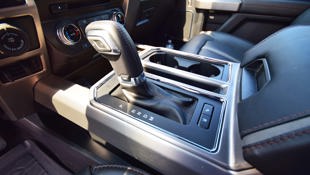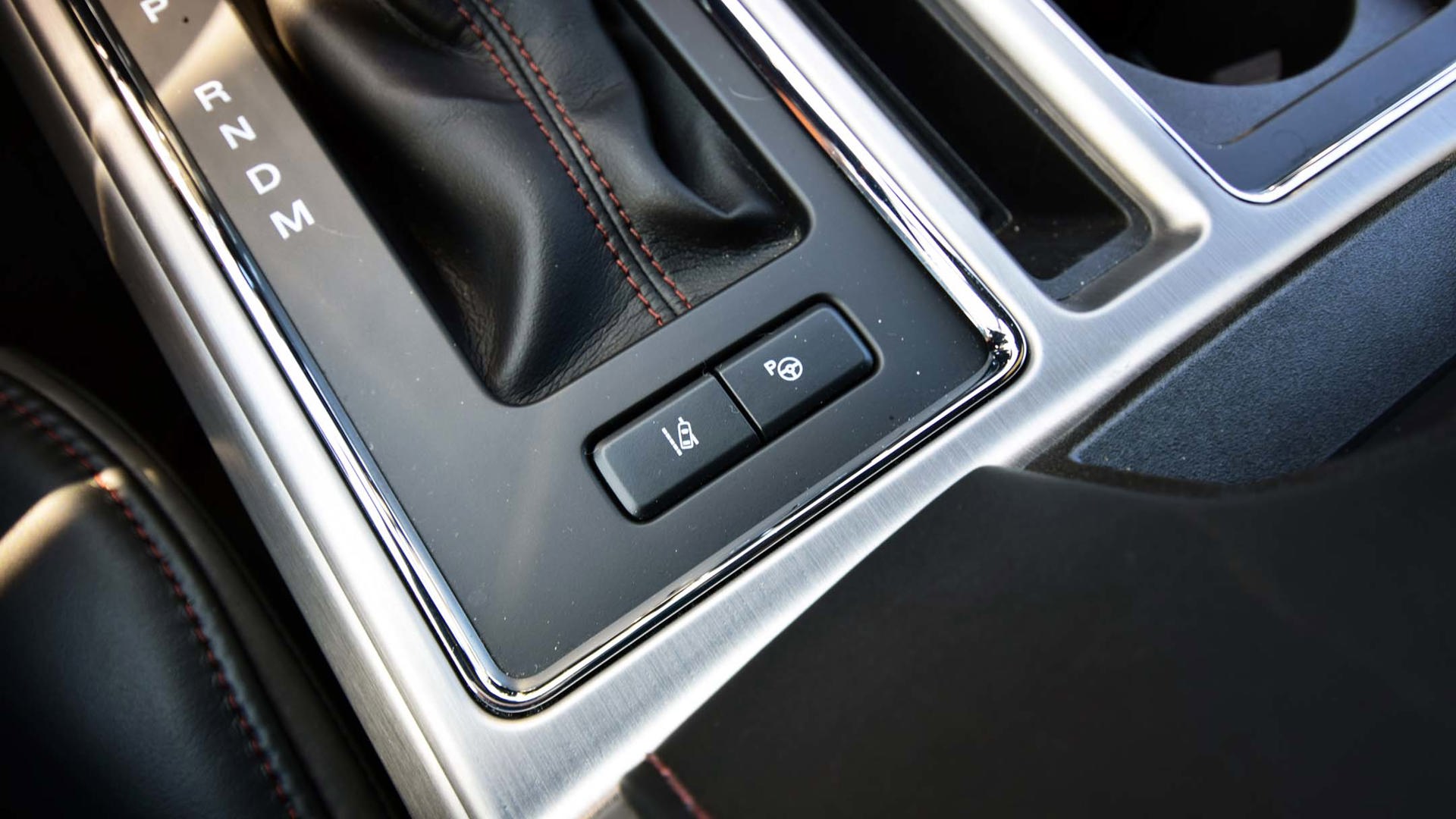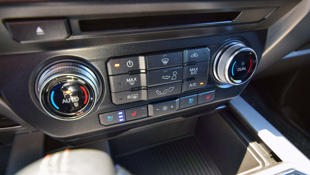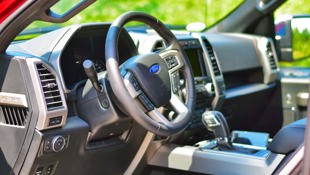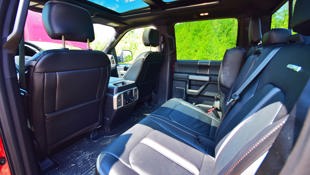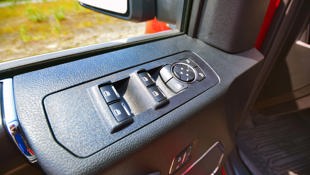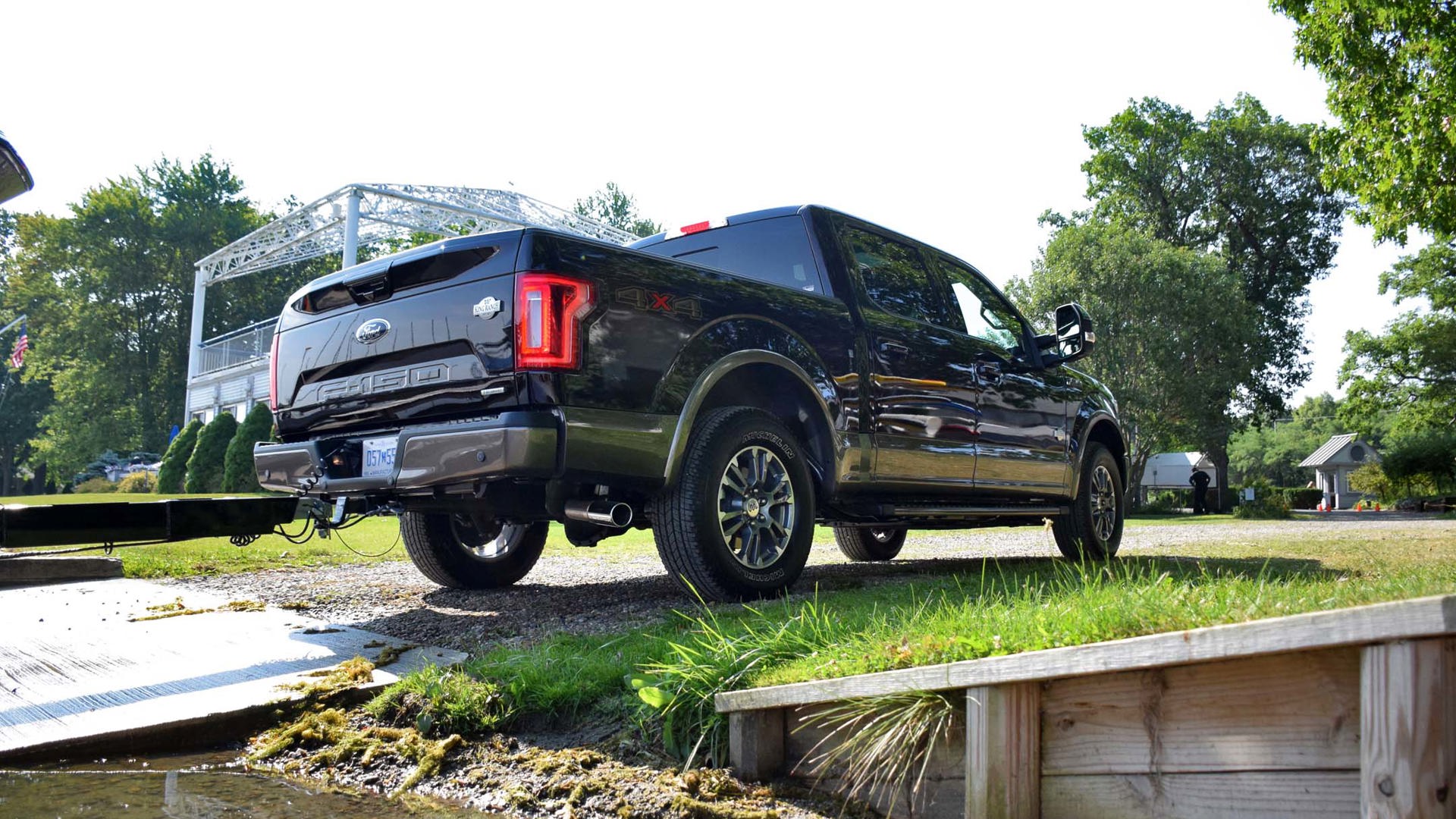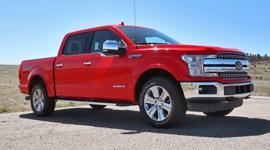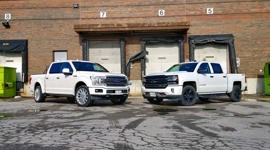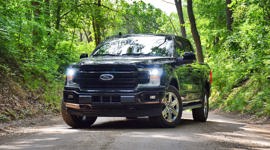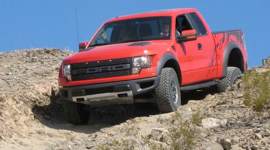 AutoTrader SCORE
AutoTrader SCORE
-
STYLING8/10
-
Safety8/10
-
PRACTICALITY9/10
-
USER-FRIENDLINESS8/10
-
FEATURES9/10
-
POWER9/10
-
COMFORT8/10
-
DRIVING FEEL7/10
-
FUEL ECONOMY9/10
-
VALUE7/10
The following is a list of vehicles from recent test drives that have used more fuel (as measured by hand and driven over very similar routes) than the 2018 Ford F-150 4x4 Power Stroke:
All said, F-150’s newly available diesel wouldn’t (and doesn’t) feel out of place in a $90,000 luxury SUV.
2016 Toyota Tacoma V6 4x4 (very low-mileage tester, 16.0 L/100 km)
2017 Jeep Wrangler Willys (15.0 L/100 km)
2017 Honda Ridgeline (11.7 L/100 km)
2016 Jeep Cherokee V6 Trailhawk (11.3 L/100 km)
Ford’s just deployed the most fuel-efficient engine yet into the current F-150 lineup. Recently added to the order sheet is a 3.0-litre Power Stroke Turbo Diesel V6 with 250 horses, 440 torques, and – thanks to the ongoing spirit of perpetual one-upmanship – better fuel mileage and higher hauling capacities than the Ram 1500 EcoDiesel with which it primarily competes.
F-150 shoppers after towing torque galore and reasonable fuel bills, this one’s for you: plenty of jam, and fuel savings to boot. After a week at the wheel, with plenty of highway and off-road driving but no towing, I’d landed at a measured-by-hand 10.8 L/100 km (10.4 L/100 km according to the on-board computer).
The gist? This hulking, full-function 4x4 uses fuel about as quickly as something like, say, a Honda Pilot.
Many people still associate diesel power with the clattery, sooty diesels from decades back – and automakers have been making big steps towards eliminating that perception.
In recent years, modern diesels became impressive for running without sounding like a blender full of rocks, or barfing out soot like an out-of-control tire fire. Also, you no longer needed to turn them off in the drive-thru to order your morning double-double without deafening the poor soul taking your order on the other end of the mic.
I showed a friend a Ram 1500 EcoDiesel a few years back, after he told me he’d never buy another diesel because his 80s Volkswagen Rabbit was noisy and rattly and made a smell that upset his wife. His jaw nearly hit the floor when I started the truck and he didn’t get fogged out from the exhaust – or deafened by the noise.
“Hmph. That doesn’t sound remotely like a school bus,” he said.
The Latest in Diesel Engine Design
Today, things have advanced even further. Now, diesel engines are proving smoother and quieter than ever, and more of them are even outdoing gasoline engines on many aspects of refinement, too.
Last year, I reported that the then-new Land Rover Discovery Diesel had one of the quietest and most refined engines I’d ever encountered, diesel or otherwise. That UK-built powerplant is a close cousin of the F-150’s new Power Stroke – both born of a joint venture, they share output figures, and though the Ford variant has a multitude of tweaks and upgrades for pickup use (including its own block), it’s just as classy an engine. All said, F-150’s newly available diesel wouldn’t (and doesn’t) feel out of place in a $90,000 luxury SUV.
As it turns out, there’s little to report in terms of any compromise between the operation of F-150’s latest engine, and its gasoline counterparts.
Tap the ignition button, and it fires up immediately – no waiting for glow plugs. The idle is unremarkable, and unless you’re paying close attention, you’ll hardly notice the subtle vibration and almost inaudible sounds that give the fuel source away.
Smooth Operator
Ditto while driving. Operated gently, the 10-speed automatic works with the engine’s massive low-rev torque to keep it spinning slowly, to upshift low and early, and to run the engine all but inaudibly. Even pushed for a quick pass or merge, thrust comes on strong and fast, and the sound and vibration levels are easily within the realm of any of F-150’s gas engines, maybe better.
The new diesel engine is unfailingly polite, and usually, you hardly know it’s even there, let alone that it’s a diesel.
This supports F-150 drivers who will frequent the highway on long drives. In addition to a monster fuel tank and thrifty mileage that’ll more than accommodate a full day’s cruising without refueling, drivers are perched up high, surrounded by plenty of room and glass, supported by good outward sightlines, and they’ll enjoy a comfortable ride on smooth highways.
Here’s a truck that makes it easy to relax, even if the steering is a little too vague to confidently lock it onto its line at higher speeds.
Elsewhere, F-150 features several new-this-year updates: including revised grilles and tailgates, updated interior colour and materials selection, and some new feature content – including a blind-spot monitor system that can watch for vehicles next to your trailer as you plan a lane-change. Same tailgate ladder. Same kick-out and motorized side steps. Same slick, responsive, and easy-to-use central command system, which is one of the best in the game. Your fingertips can saunter speedily through the screens and menus at Warp Nine, and the system is consistently responsive, fast, and nicely animated and rendered.
Doing the Math
So, the big news is under the hood, and elsewhere, it’s everything else you’ve come to know and love about the F-150 in recent years. Still, the F-150’s 3.5-litre EcoBoost V6 is its powerhouse powerplant. It’s got more power, more torque, and, importantly, it costs less.
So, let’s do some math.
In my specific tester, the diesel engine commands a premium of about $5,700 over the standard 5.0-litre non-turbo V8. For that investment, you’ll save about 3.8 litres of fuel per 100 km. That’s worth about $5 per 100 km at current gas prices, and given the approximate year-round difference between the price of gas and diesel where I live, in Northern Ontario. Your digits may vary.
Crunch the numbers, and you’re looking at, maybe, 115,000 kilometres before the new Power Stroke starts putting money back in your pocket – or sooner, if you’re towing more frequently, where fuel economy is bound to take less of a hit. This rough calculation doesn’t include possibly costlier diesel oil changes, or occasional topping-up of the required diesel exhaust fluid (DEF).
The gist? Do the math to make sure the investment in diesel power is right for you.
Conclusion
Two other notables for those considering upgrading from an older F-150.
First, and contrary to popular belief, the 10-speed automatic doesn’t get confused, feel like it has too many gears, or exhibit any sign of hunting or difficulty in deciding which gear to be in. I was asked if it feels like it shifts too often, and the answer is no: this transmission can skip multiple gears in each direction as needed. It has 10 gears, but doesn’t step through all of them every time. The benefit is smoother performance, lower revs more often while cruising, higher revs more readily when called upon, and better mileage overall.
Second, if you’re coming out of a previous-generation F-150, you’ll find the LED headlights on this new machine to be a significant upgrade. After dark, their performance approaches what I typically expect in a big-dollar luxury sedan in terms of spread, saturation, and lighting output positioning and colour.
In summation: the new Power Stroke is, by a considerable margin, F-150’s thriftiest engine, arguably its most refined, and one that gives drivers big-truck capability with a fuel bill in the same ballpark as any number of much smaller, less capable, and less-powerful cute-utes.
If the F-150 Power Stroke is right for you, and it probably is, you’ll be enjoying one of the best diesel engines on the market in one of the market’s most sought-after pickups.
| Engine Displacement | 3.0L |
|---|---|
| Engine Cylinders | V6 |
| Peak Horsepower | 250 hp @ 3,250 rpm |
| Peak Torque | 440 lb-ft @1,750 rpm |
| Fuel Economy | 11.8/9.3/10.7 L/100 km cty/hwy/cmb |
| Cargo Space | 66' (168 cm) box |
| Model Tested | 2018 Ford F-150 Platinum SuperCrew Short Box Power Stroke Turbo Diesel |
| Base Price | $71,579 |
| A/C Tax | $100 |
| Destination Fee | $1,800 |
| Price as Tested | $86,579 |
|
Optional Equipment
$13,100 – Power Stroke Turbo Diesel Engine $5,650; Ruby Red Metallic $450; FX4 Off-Road Package $750; Technology Package $1,350; Spray-In Bedliner $550; Wheel Well Liner $180; Box Side Steps $500; Twin-Panel Moonroof $1,750; Adaptive Cruise Control $1,750; All-Weather Floor Mats $170
|
|
